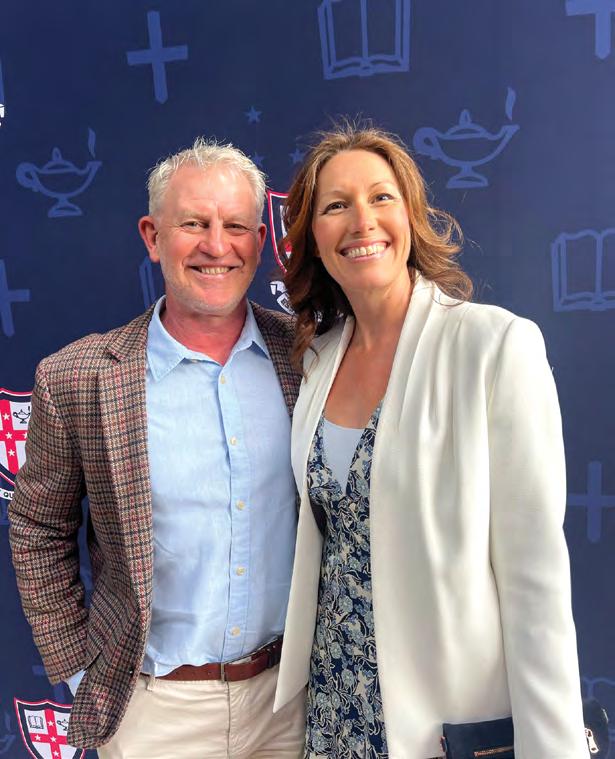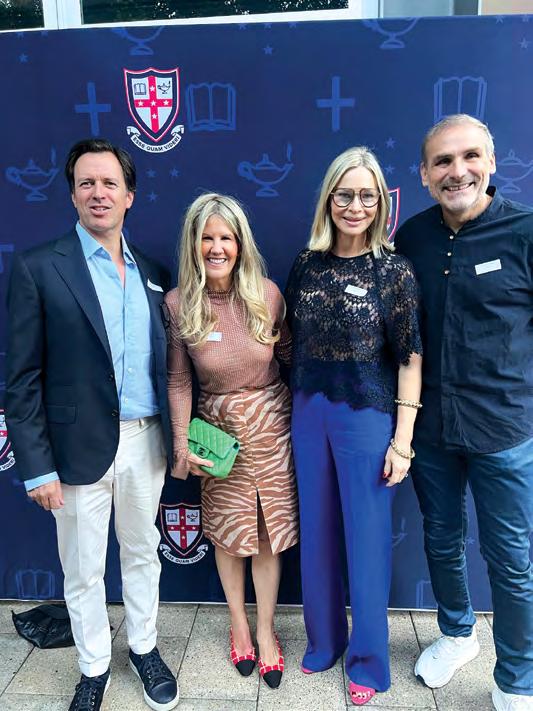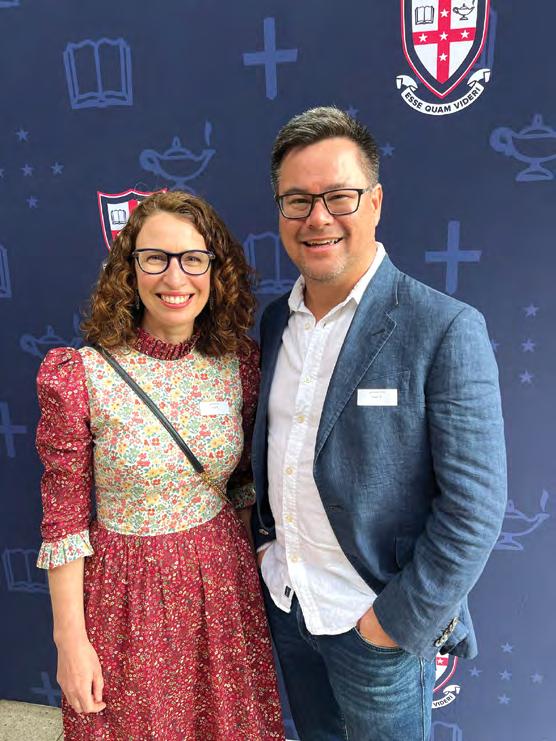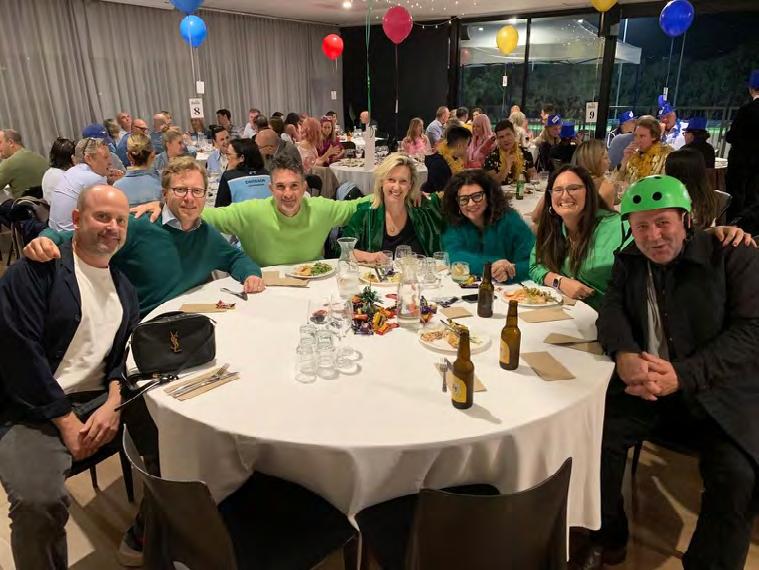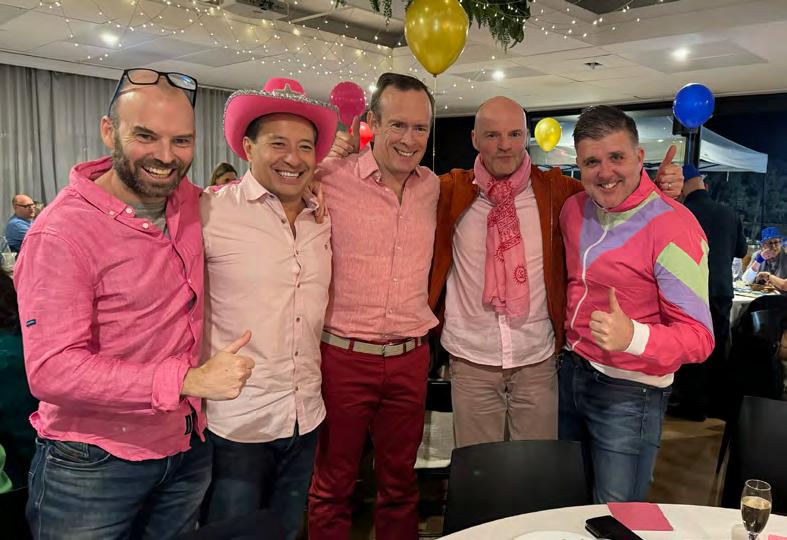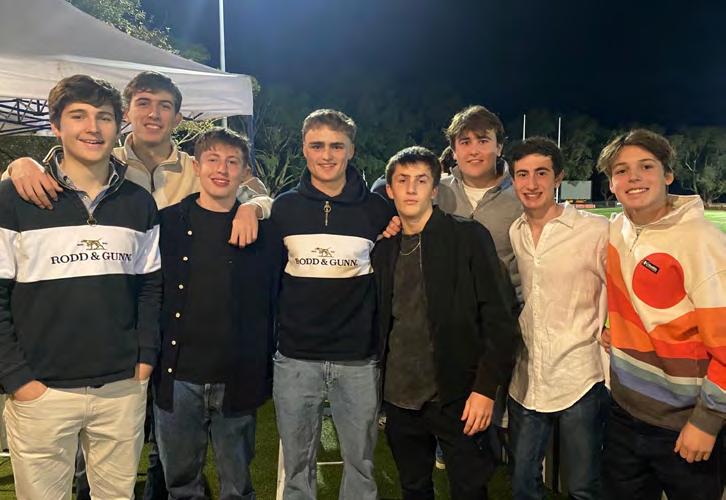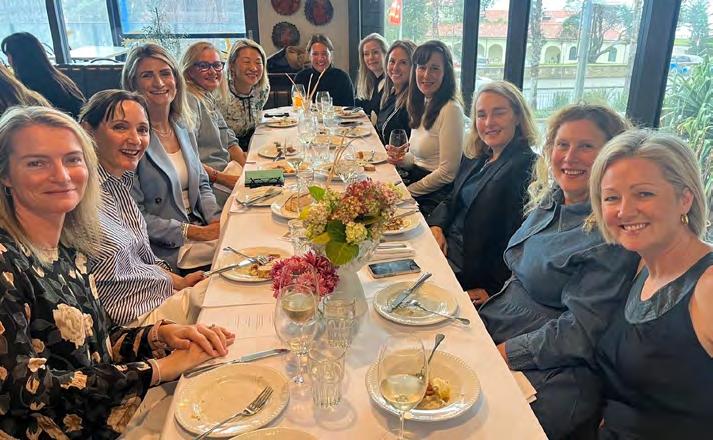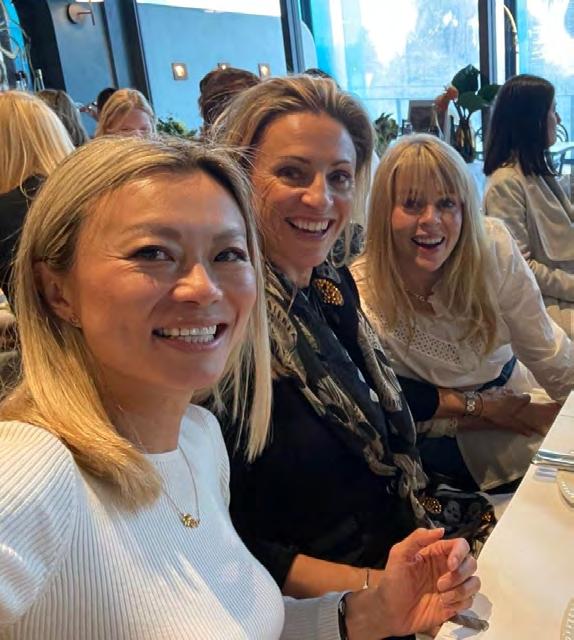EQV

THE TRANSFORMATIVE POWER OF DRAMA
BROADENING HORIZONS UNDER THE SPOTLIGHT BUILDING SKILLS FOR LIFE



BROADENING HORIZONS UNDER THE SPOTLIGHT BUILDING SKILLS FOR LIFE

IN THIS EDITION OF EQV , one of the key themes that comes through in so many of the featured articles, is creativity and why it is one of the most dynamic aspects of learning. From Art and Music to innovative problem-solving in STEM subjects, creativity is the thread that weaves through every subject, allowing students to explore and express their thinking.
Creative learning goes beyond traditional methods, encouraging students to think outside the box. It’s about fostering an environment where curiosity is celebrated, and mistakes are seen as opportunities to learn. In this issue, we highlight the unique ways our school promotes creativity, from participation in the musical Little Shop of Horrors, or Stuart Little, to taking to the stage at Threads, our annual Gala Concert.
We also feature profiles of key members of staff who play an instrumental role in nurturing this creative environment, giving insight into their philosophies and teaching approaches.
Additionally, we take a look into the inspiring careers of three successful Old Cranbrookians, whose creative thinking has driven them to excel in their respective fields. Their stories serve as a reminder of how creativity can open doors to incredible achievements beyond the school gates.
As we continue our journey towards coeducation, we hear how our students are taking giant steps along the way through the newly appointed Student Cooeducation Committee, and how important this committee is for the future integration of girls and the perspectives they will bring.
In an increasingly globalised world, understanding and appreciating diverse cultures is more important than ever. In this edition you will read how our School exchange and cultural immersion programmes offer our students unique opportunities to step outside their comfort zones, experience life in different parts of the world, and develop skills that are essential for their personal and academic growth.
We hope you will find this edition both engaging and thought-provoking.
THE TRADITIONAL ROLES OF ACADEMIC LEARNING BEING THE DOMAIN OF SCHOOLS AND WELLBEING THE DOMAIN OF PARENTS HAS SHIFTED.


INSPIRING STUDENTS TO EXPLORE AND EXCEL IN THESE DISCIPLINES AND EMPOWER THEM TO APPLY THEIR KNOWLEDGE IN REAL WORLD CONTEXTS.
CAST AN EYE OVER HOW SUCH A MAGNIFICENT ONE-NIGHT GALA CONCERT IS ACHIEVED AND DELIVERED TO THE HIGHEST OF MUSICAL STANDARDS.
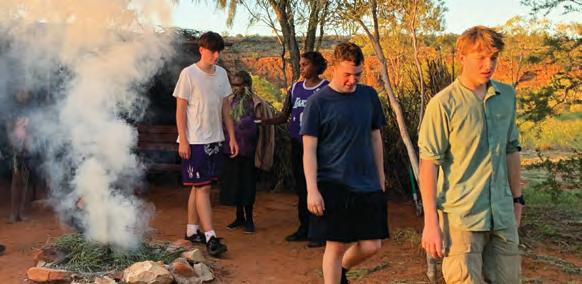

THIS COMMITMENT IS NOT JUST ABOUT WORDS; IT’S ABOUT ACTION, COMMUNITY INVOLVEMENT, AND CREATING A LASTING IMPACT.

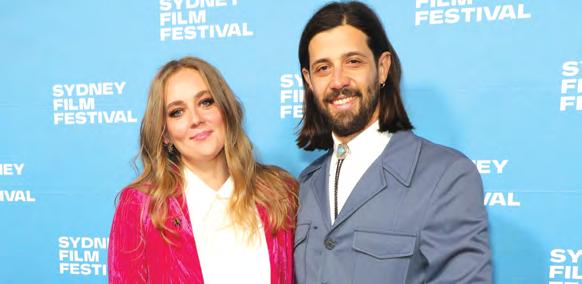
BY MICHELE MARQUET
PARENTS ARE A CHILD’S FIRST TEACHERS AND THE IMPORTANCE OF THAT RELATIONSHIP CANNOT BE UNDERESTIMATED. WHAT HAPPENS TO THE ROLE PARENTS SHOULD PLAY AS CHILDREN MOVE INTO MORE FORMAL SCHOOL SETTINGS AND AS THEY PROGRESS INTO THEIR TEENAGE YEARS? THERE REMAINS A VITAL NEED FOR THE FAMILY WITH THE SCHOOL TO WORK TOGETHER IF WE ARE TO ENABLE OUR CHILDREN TO DEVELOP INTO PEOPLE WHO ‘LEAD ADVENTUROUS, COURAGEOUS AND GENEROUS LIVES WHICH CONTRIBUTE TO THE BETTERMENT OF SOCIETY.’

TTHE PARENT-SCHOOL-STUDENT relationship has been an important consideration in the past, particularly in the academic development domain. Research has always shown that engaged and interested families lead to better educational outcomes for students. However, never at any other time in history has the need for that relationship to be constructive and positive been more vital. It has also never been more important for the student to have their voice heard in this discussion – even if their desires do not ultimately prevail.
Education extends far beyond the classroom. Traditional roles of academic learning being the domain of schools and wellbeing the domain of parents have shifted. Boundaries for both groups are now much less clear. The role of parents was previously more limited to ensuring homework was completed and attending parent-teacher interviews.
Over time, however, the expectations of parents have changed. As our understanding of child development has become more nuanced and as research has explored the impact of family and school on individuals, parents have become more actively involved in the educational process and more deeply engaged in every aspect of their child’s growth and development. Parents are now more open to hearing their children’s perspective and although few parents would leave all the decision-making to a child, they do want to understand their views and feelings.
We are less inclined these days, as a broader society, to see how things may pan out for our children. Early intervention has been shown to be effective and with easier access to testing to understand why our children may be behaving, succeeding or struggling in certain situations or areas, we seek to intervene as early as possible in pursuit of the best outcome.
Several factors have driven this shift to greater involvement. Technology has meant the line between school and home has blurred, allowing for more direct communication between educators and parents. But it has also brought immense challenge for schools and families alike, as our children’s social world increasingly moves online and away from the easy observation of the adults in their lives who love and care for them the most. The desire to hear what our children feel about something, while remembering they are not developmentally adults, brings a range of challenges for us all, in working through different perspectives and in the ultimate decision-making process. Adulthood, whether as parents or educators, brings with it the responsibility of guiding those younger with wisdom, respect and kindness. Additionally, the increasing pressures of modern life, including the demands of balancing work and family, have led to a more significant reliance on schools to provide not just education, but also a range of support services.
Parenting in our modern world is no easy task. The pressures are immense, and the challenges are constantly evolving. As educators, we empathise with these challenges and Cranbrook endeavours to provide support that extends beyond the classroom, through access to additional pastoral staff and the provision of some therapeutic services, to offering a series of programmes and initiatives to assist parents from wellbeing programmes, library loans on parenting, CSPA Parent Events and so on, as well as our communication structures and processes.
We also need to protect and nurture the staff with these increases in demand on their time, expertise and cognitive load. Teaching during this current age is one of the most complex professions, requiring the broadest of skillsets possible, but also one of the most important roles anyone can do.
PPARENTS AND TEACHERS must become allies supporting each other for the best interests of the students. As a school, we create opportunities for parents to be involved –from regular reporting to opportunities for parents to engage in activities and events at school. When parents and students feel involved and we have built a respectful relationship, this leads to positive outcomes for all – we work with our parents and students to make the best decisions.
The education we deliver in the classroom will always need to be reinforced at home by parents. Parents can and do support the School in so many ways, from ensuring their child completes their reading practice when very small, reiterating the importance of study time as they move into Senior years, backing and supporting a teacher’s feedback to a student on a piece of submitted work, helping their child to see the perspective of others they may clash with, to showing empathy and kindness towards staff in their engagement with them about their child.
One of the most critical aspects of this partnership is the role of parents as role models for their children. By modelling the values of respect, responsibility and resilience, in their own interactions, parents set the foundation for their child’s character. Schools can significantly reinforce these values, but families play the most important role in laying these guidelines for a child’s life.
For a child to gain the most from his or her education, it is absolutely essential that a dynamic partnership exists between parents and educators. They need to see each other as being on the same team, working together in the best interests of the child. Families and the school bring different things to this relationship. Parents have an intimate and ongoing knowledge of
their child that educators can benefit from as they cater for their learning, especially as they grow and change over the years.
Educators bring expert understanding of child development and how children learn best in the school context – research and knowledge built upon and refined through working with large numbers of students.
When the individual knowledge about a student is interwoven with the broader knowledge of children at a certain stage of development and how children learn best in school, an extraordinary education can result.
To paraphrase educational philosopher, Martin Robinson, a truly liberal education like Cranbrook’s, ‘marries respect for knowledge with creativity, fosters discipline alongside free-thinking, and values citizenship with independent learning’.
As well as academic development, school is all about learning how to learn successfully in a group, collaborating, persisting and overcoming challenges with increasing independence. Skills which will prove to be essential as our children leave school and enter the wider world where workplaces will increasingly require them to be able to work in teams to solve problems.
The only way we can ensure the best learning journey for any child is when the family and the school work in unison, supporting each other to make the best decisions. This does take a degree of trust on both sides that the underlying intention of any decision is for the good of the child – with an awareness that no one will ever get it right all the time. Parents and teachers bring different expertise to the equation: We have something to learn from each other and when we communicate this respectfully, then extraordinary things can happen for our students.
TTHE ADAGE ‘it takes a village to raise a child’ has never been more relevant. When children know they are valued and respected, they are more likely to engage fully in their education and reach their full potential. This sense of belonging and security is not just fostered at home, but also through the school. Our shared commitment to their education and personal development is the key to unlocking their potential and preparing them for the future.
There are times in all families when parenting, like teaching, is challenging. In these times I remind myself of the privilege and joy these roles bring. My deepest gratitude to all the parents who partner with us in this vital work. Your involvement, support and love are instrumental in shaping the future of our students and it is an honour to work with you.


Cranbrook School is committed to fostering innovation through its STEAM (Science, Technology, Engineering, Arts, and Mathematics) programmes. These programmes inspire students to explore and excel in these disciplines and empower them to apply their knowledge in real-world contexts. From winning robotics competitions to developing cutting-edge apps, space programmes and conducting groundbreaking scientific research, Cranbrook students are proving they are tomorrow’s innovators.
ONE OF THE STANDOUT achievements in Cranbrook’s STEAM programme is the success of its Robotics teams. These students have consistently excelled in regional and national Robotics competitions, showcasing their skills in engineering, programming, and teamwork.
The Robotics programme at Cranbrook is more than just a club; it’s a hands-on learning experience where students design, build, and programme robots to complete complex tasks. The challenges faced in these competitions require not only technical expertise but also creativity, strategic thinking, and effective collaboration.
For instance, a recent victory at a local Robotics competition highlighted the ingenuity and perseverance of Cranbrook students. Their robot, designed to navigate a challenging obstacle course and complete specific tasks, stood out for its innovative design and flawless execution. This achievement reflects the School’s emphasis on practical, project-based learning, where students are encouraged to push the boundaries of what they can create.
Head of Technological and Applied Studies (TAS), Joel Budd explains “Our department is very focused on development and growth. we are always looking at how we can provide students ways to develop their thinking in areas of interest.
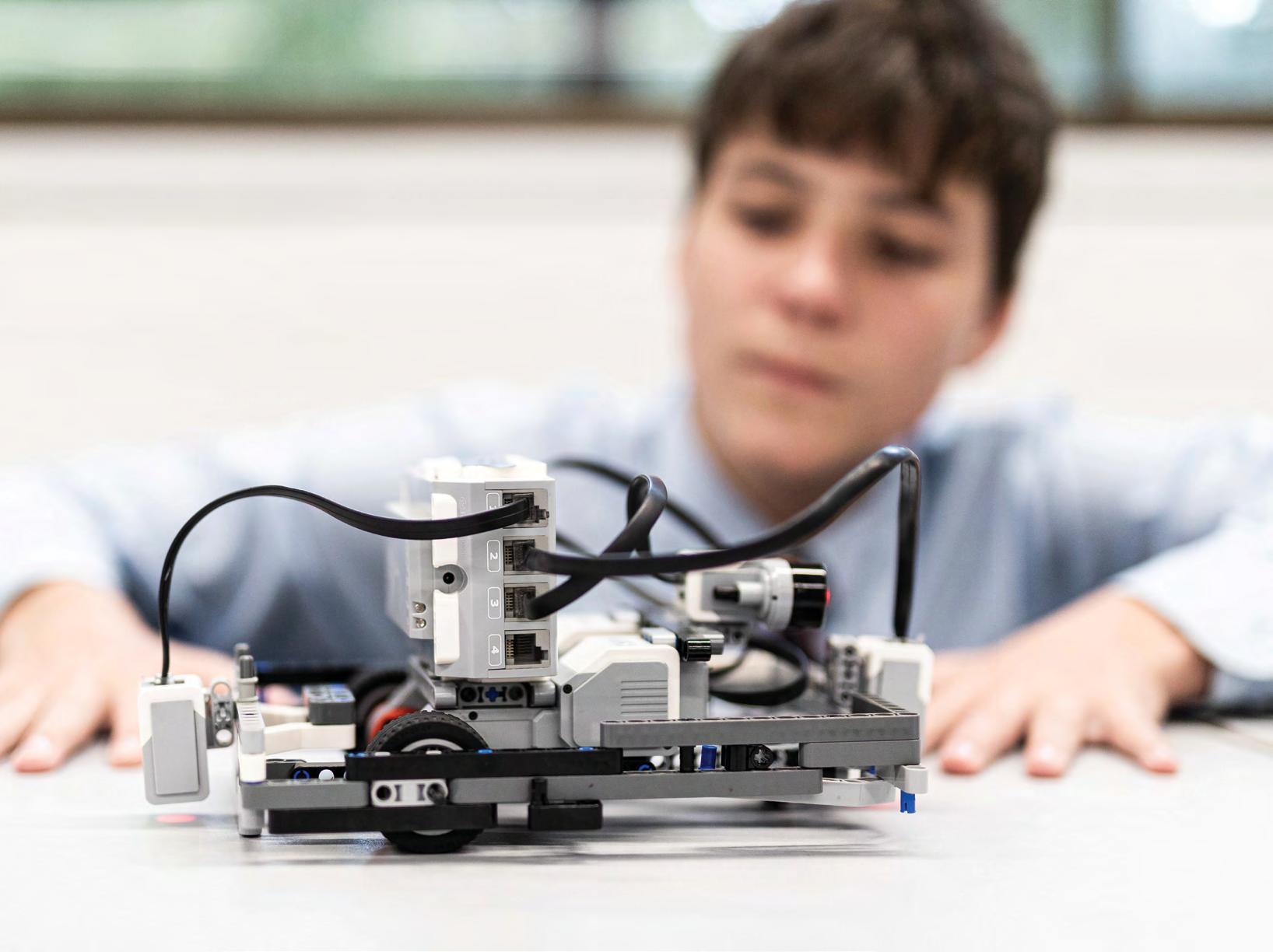
“For example, our HSC Software Engineering and IB Computer Science teacher Ross Fryer, along with Science teacher Paul Vessalas, are leading a STEM hub co-curricular programme focusing on VEX Robotics. VEX Robotics is well known for its competitions which are managed by the Robotics Education and Competition Foundation (RECF). These competitions are held worldwide and encourage students to apply their STEM knowledge in real world scenarios.
“The programmes are designed to prepare students for future careers by teaching them valuable skills such as coding, engineering and problem solving. While Cranbrook has started in this space, we are excited and focussed on competing and developing further in Robotics,” Joel says.
Cranbrook’s STEM HUB co-curricular activity is limited to 20 students, from a range of different year levels. Students learn algorithms to control robots using block and text-based programming languages and then design and build robots to complete tasks. Robots were autonomous and remote controlled and completed a range of activities.
“Alongside the VEX Robots programme, we have introduced a new unit for Year 9. Students have been introduced to autonomous vehicles and are very intrigued with development from larger organisations such as Tesla, Waymo and Cruise. The students are grounding themselves in the disciplines and developing an understanding of the issues that autonomous vehicles have on the wider community. It will be interesting to watch developments and student engagement in this space,” Joel says.
CRANBROOK’S COMMITMENT to innovation is also evident in its app development programme, where students are taught to turn their ideas into functional applications that address real-world problems as well as provide entertainment. The programme combines the technical aspects of coding with design thinking and user experience, ensuring that students not only create apps that work but are also intuitive and user-friendly. Ross Fyer, IB Computer Science teacher, has worked diligently with the students to ensure their game apps are of the highest standard.
In an exciting achievement for Cranbrook, a team of four Year 10 students from the co-curricular IST (Information and Software Technology) Club claimed the top prize in the prestigious ACER Australian STEM Video Game Challenge in the Years 10 to 12 open category.

“By engaging in STEAM initiatives, students develop critical thinking, creativity, and problem-solving skills that are essential in today’s workforce. These projects challenge them to apply theoretical knowledge in practical scenarios, fostering innovation and adaptability. Such hands-on experiences equip students with the ability to approach complex problems from multiple perspectives, which is increasingly valuable across various industries, from technology and engineering to design and the Arts.”
Competing against students nationwide, the team’s innovative space-based golf game, Swingularity, impressed the judges with its creative gameplay, technical excellence, stunning visuals, and immersive soundtrack.
Swingularity offers players a unique challenge: guiding their golf ball through the gravitational forces of planets and stars in deep space. This creative fusion of science and gaming made the project stand out, blending complex physics with the fun and strategy of golf in a futuristic setting.
Its development team included Year 10 students Hudson Woolford and Ted Boss leading the coding efforts, designing gameplay mechanics, and refining the player experience. Their work was complemented by Mickey Chen, who created the game’s striking space-themed graphics, and Kevin Chu, whose atmospheric soundtrack added depth and excitement to the game.
Their national win took them to the PAX Aus 2024 Game Conference in Melbourne in October where they received positive feedback from a range of game developers and they now plan to further develop the game and place it on streaming services for download.
CRANBROOK’S INNOVATIVE APPROACH to education is perhaps most evident in its integration of Art and Science within the STEAM framework.
Recognising that creativity is essential to scientific and technological innovation, the School encourages students to explore the intersections between these disciplines. Classroom projects that blend Art and Science are a hallmark of Cranbrook’s curriculum, allowing students to develop a well-rounded understanding of both the technical and creative aspects of problem-solving.
One such 2024 Year 7 project involved students creating visual representations of complex scientific concepts via an Australian ecosystem stop motion animation.
Beginning with the statement of inquiry, ‘The Earth is a collection of systems and cycles that are affected by human actions,’ the students worked in groups of three or four students to research and produce a stop motion animation about an Australian rock formation and its surrounding ecosystem.

AND KEVIN CHU (ABSENT)
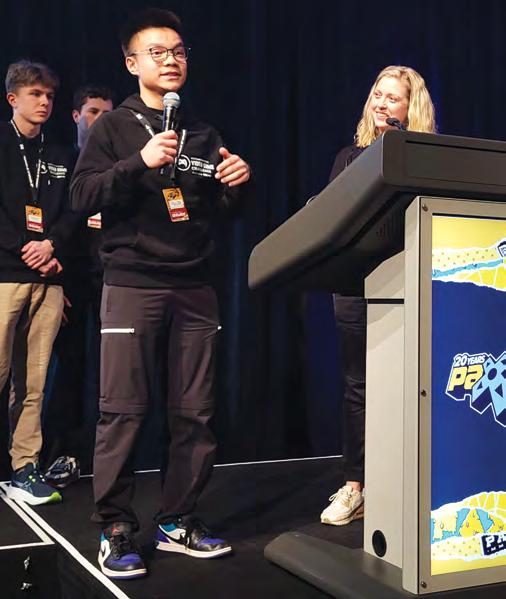
The Northern Territory’s Uluru and Karlu Karlu (Devil’s Marbles) were two of the rock formations students could choose for their project. They firstly researched the creation and evolution of the rock formation as well as its impact on the local flora and fauna.
Charged with this knowledge and research documentation, the students then put their creative minds to work, to produce a 60 second animation to visually demonstrate their learnings. This included use of colour and space, voiceovers, music, sound effects and symbols.
Using materials including plasticine, coloured paper, scissors, glue, rulers, cardboard, string, paper clips, they built and photographed their projects to show the effects of climate, flora, fauna and time, on the rock formation and landscape.
This Art component complemented the scientifically written project requirement, complete with bibliographies, and their visual and creativity skills.
IB MYP Coordinator, Erin Munn said the Year 7 students developed their communication skills to “effectively represent how a change in population of one species in an ecosystem will impact the population of other species in the ecosystem. They creatively showed how food webs and energy transfers affect the landscape over hundreds of years.
“As well as scientific and creative expression, the group project built the students’ communication and research skills, as well as self-management and social skills required for group work. This is a vital part of preparing for students for future group tasks and projects as they progress through their middle and senior high school years,” Erin says.
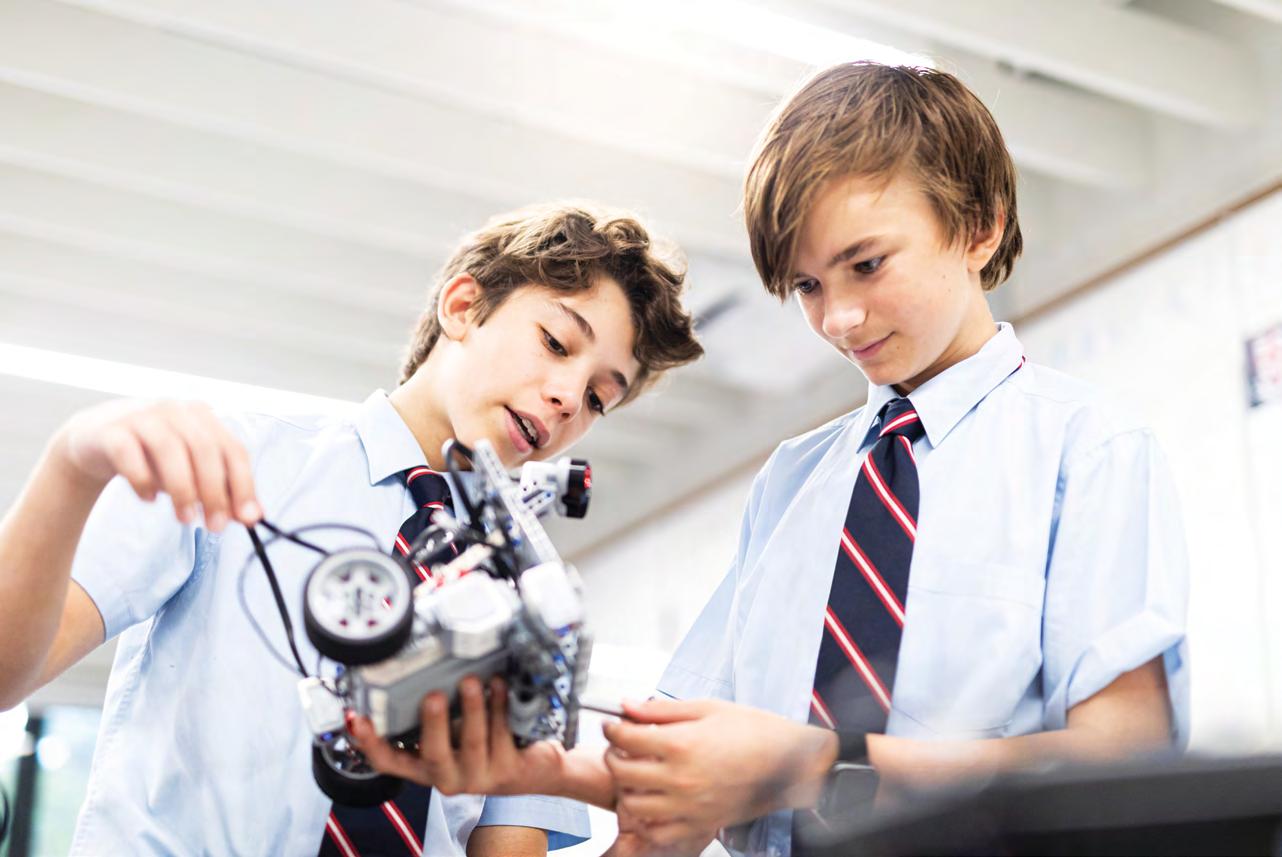
STEAM PROJECTS PLAY a pivotal role in preparing students for a dynamic and rapidly evolving career landscape, Joel Budd explains: “By engaging in STEAM initiatives, students develop critical thinking, creativity, and problem-solving skills that are essential in today’s workforce. These projects challenge them to apply theoretical knowledge in practical scenarios, fostering innovation and adaptability. Such hands-on experiences equip students with the ability to approach complex problems from multiple perspectives, which is increasingly valuable across various industries, from technology and engineering to design and the Arts.”
STEAM encourages interdisciplinary collaboration, mirroring the real-world environment where solutions often require input from diverse fields. Working on these projects enhances communication, teamwork, and leadership skills, all of which are crucial for career success. “Whether students pursue careers in engineering, healthcare, education etc, the collaborative and cross-functional nature of STEAM projects gives them the confidence and competence to thrive in diverse professional settings,” he says.
“The importance of STEAM education extends beyond technical skills; it helps students become lifelong learners with an appreciation for how different fields intersect to create innovative solutions. By engaging in STEAM initiatives, students are better prepared to tackle the challenges of an increasingly digital and interconnected world, making them highly competitive in the job market,” he adds.
THE SUCCESS OF CRANBROOK’S STEAM programmes is reflected in the achievements of its students, who consistently excel in competitions, develop impactful projects, and contribute to scientific research. But beyond these accomplishments, Cranbrook is committed to fostering a culture of innovation, where students are encouraged to think critically, collaborate effectively, and approach challenges with creativity and curiosity.
As Cranbrook continues to expand its STEAM offerings, the School remains dedicated to preparing students for the rapidly changing world they will inherit. By equipping them with the skills and mindset needed to innovate, Cranbrook is not just educating students—it’s shaping the leaders, creators, and problem-solvers of tomorrow.
As Cranbrook School moves ever closer to coeducation in 2026, the School has appointed a Student Coeducation Committee comprising of students from Years 7-11.
THIS COMMITTEE AIMS to provide a platform for young voices to engage in shaping the coeducational learning experience by voicing their perspectives and raising concerns. By fostering dialogue and collaboration, the committee not only supports the School’s leadership but also helps ensure that all students feel included and empowered during this significant change.
Daisy Turnbull, Director of Coeducation at Cranbrook, and Matthew Downes, Cranbrook’s Second Head Prefect, are the two key figures behind the initiative and in this article they discuss the committee’s purpose, its envisioned role in our school culture, and the exciting projects on the horizon.
How will the committee ensure that the voices of all students, especially those from diverse backgrounds, are represented and heard?
DAISY: We want to gather as much information as possible about the school community’s interests and continue to gauge a better idea of how the School is feeling. In change management they sometimes talk about beacons of change – small changes you can see, and I think the students in this group will become beacons in their own groups, houses, cohorts and teams.
MATTHEW: It is not like the School’s Student Representative Council where there is an application process, anyone can join anytime, and they are welcome to drop in. It isn’t just around coeducation, but it could be around other issues that may come up in the School.
Can you explain the purpose and objectives of the Student Coeducation Committee?
MATTHEW: The committee will give students an opportunity to have a say about the proposed coeducational learning environment. It gives them a chance to take responsibility for making Cranbrook a more inclusive community and to start setting the culture.
DAISY: One of the key roles of a Student Coeducation Committee is to advocate for inclusive policies and practices. Moving from a single gender to a coeducational system requires careful consideration of various aspects, from curriculum adjustments to co-curricular activities. By having students directly involved in these discussions, the School ensures that decisions reflect the needs and interests of the student body, providing a well-rounded educational experience for everyone.
Whose idea was it to create the Student Coeducation Committee and what inspired its creation?
MATTHEW: Ms Turnbull and I had many conversations about the possibility of introducing a Student Coeducation Committee, and we were really impressed by the response of students, especially the Year 10s who won’t have girls in their cohort but they’ll be the leaders of the School in their final year in 2026.
What specific roles and responsibilities will committee members have?
MATTHEW: The committee has been divided into three areas – culture, curriculum, and coeducational opportunities. The committee members in those areas are now working on a series of initiatives with those focuses in mind.
How do you envision the Student Coeducation Committee contributing to a positive school culture?
MATTHEW: We want the committee to be culture leaders and promote positive change in the School. After our first meeting Ms Turnbull asked us all to look for opportunities to be upstanders in our community, and we discussed all the ways we can help shift language and culture. We will work to gather feedback on an ongoing basis from students across all Year Groups and pass to Ms Turnbull who will present it to the School Executive Team. This should ensure that concerns and suggestions are heard and addressed.
DAISY: When students feel that their voices are respected, they become strong advocates for the success of coeducation, which ultimately creates a collaborative and progressive school community.
DAISY: We are also looking at supporting charities like ReLove that help victims of domestic violence, even though that’s not directly about coeducation it expands our understanding of perspectives and experience. Recently we have started raising money for World Vision’s 1000 Girls campaign to have 1000 girls sponsored for education in developing countries. The Student Coeducation Committee ran a shoe shining fundraiser which was a fun and effective fundraiser, and allowed the students to talk about why they believe in coeducation, while also practising service to their community.
Can you provide examples of initiatives or projects the committee has planned or hopes to implement?
DAISY: We have student led workshops being held in House groups and are inviting staff who have been at other coeducational schools prior to their time at Cranbrook, whether as students or teachers, to present to students. There are a series of joint excursions with local girls’ schools and we are looking at other House activities that can be run in a coeducational environment.
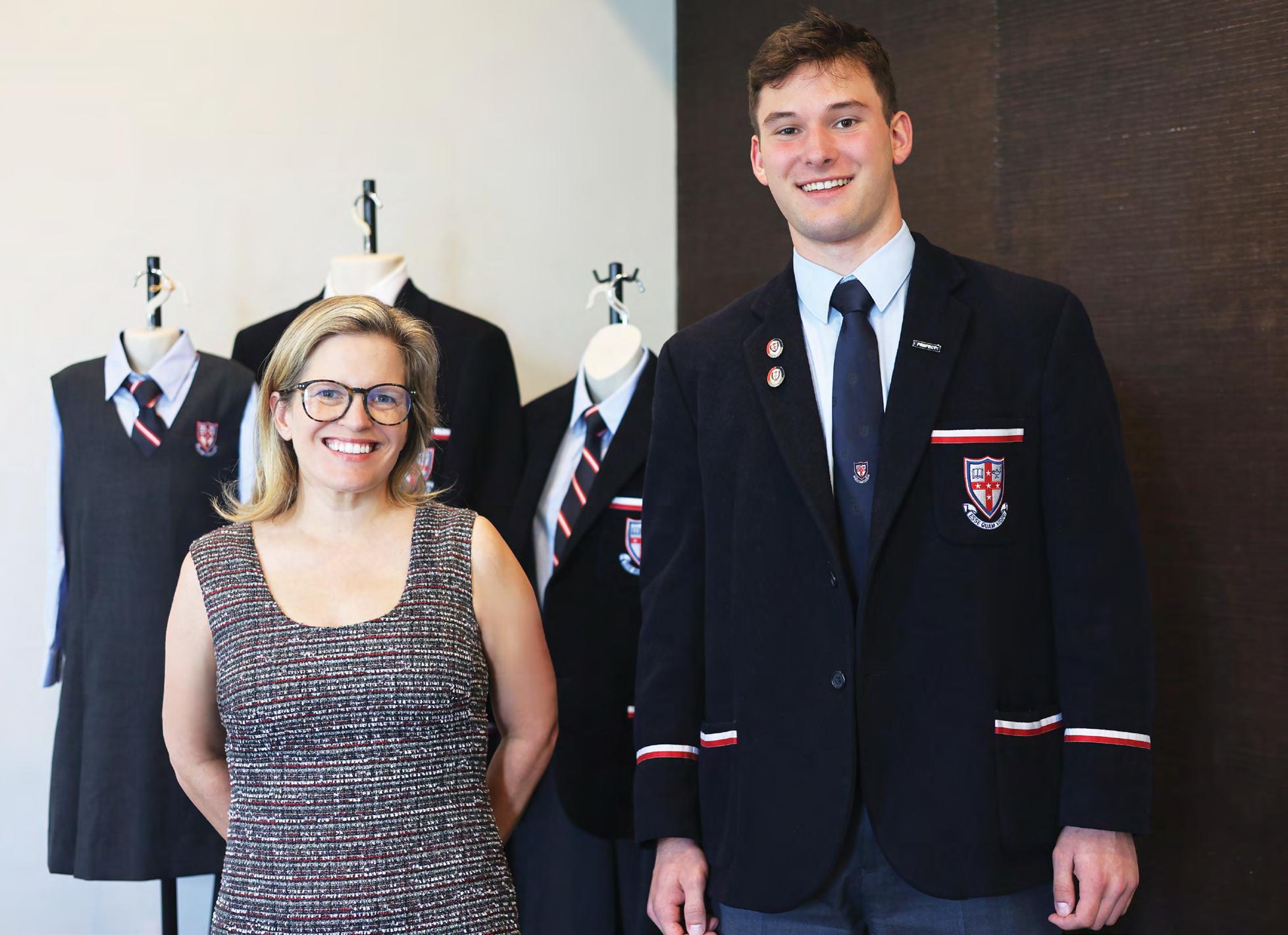
What measures will be in place to evaluate the effectiveness and impact of the Student Coeducation Committee?
MATTHEW: It is about coming up with initiatives that may be small but start to have a ripple effect. Change happens in small conversations, day by day, one by one, and we’re looking at ways to do that.
DAISY: The student committee is especially powerful because it gives students a voice in shaping the policies, culture, and dynamics of their evolving school environment. By directly involving those most impacted by the changes, the committee ensures that students’ perspectives, concerns, and ideas are heard and addressed.
What are your long-term goals for the Student Coeducation Committee, and how do you see it evolving in the future?
MATTHEW: We can’t wait for it to be coeducational from 2026! We don’t see it finishing once coeducation commences but continues to promote the whole culture of the School.
DAISY: This coeducation committee will play a significant role in promoting a positive social environment. As students from different genders come together in a learning space, there can be challenges related to stereotypes or preconceptions. The committee can lead initiatives, workshops, or events that promote mutual
respect, understanding, and camaraderie, helping to establish a school culture where everyone feels comfortable and valued.
DAISY TURNBULL AND MATTHEW DOWNES envision a future where these young leaders not only prepare for a coeducational environment but also cultivate a culture of respect, understanding, and collaboration that extends well beyond 2026. Through their efforts, they are not only addressing the challenges of today but also paving the way for a brighter, more inclusive future for all students.
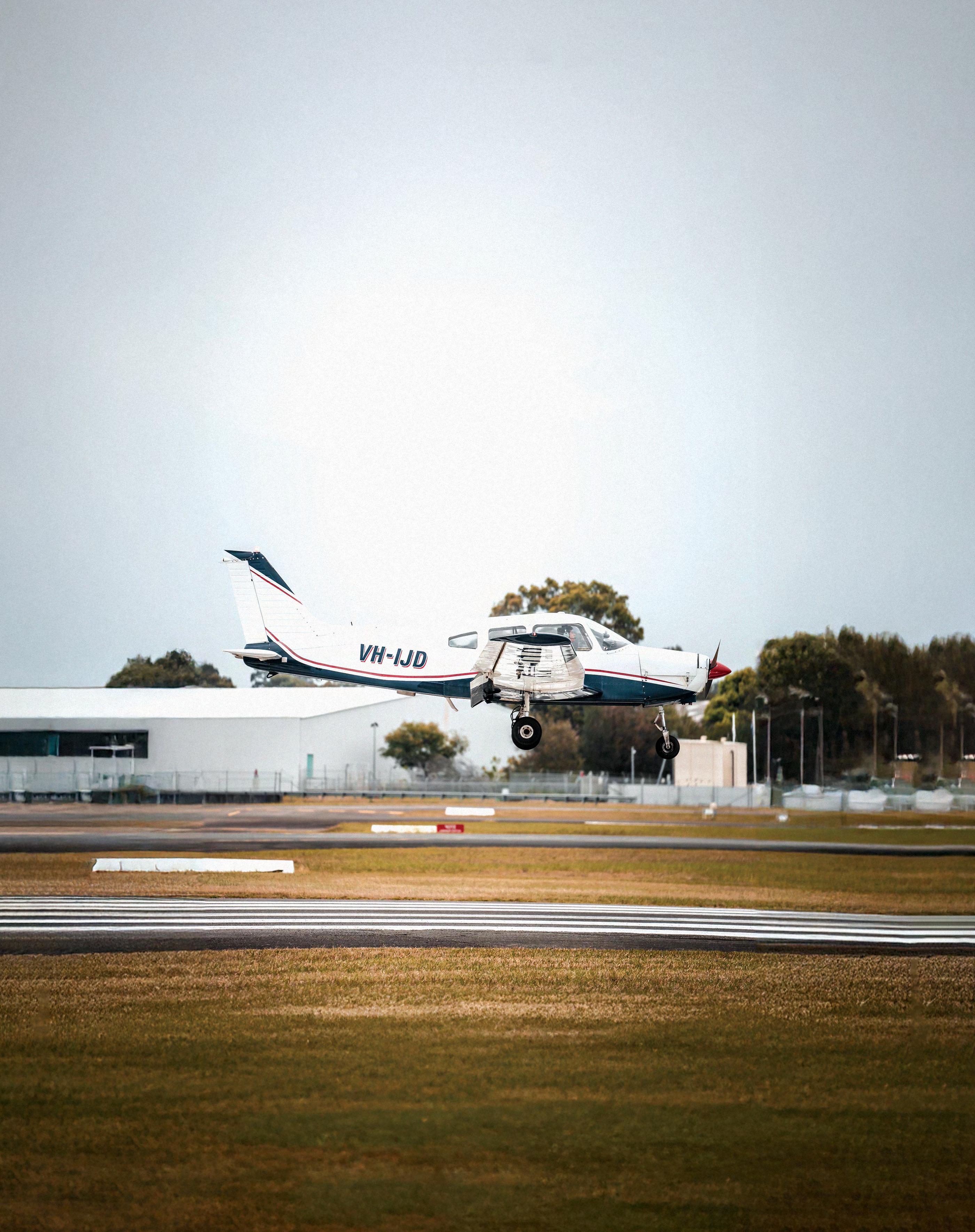
THE POWER OF THE YEAR 10 MYP PERSONAL PROJECT

EXTENSIVE RESEARCH AND WRITING EASY TO READ CONTENT WERE INTEGRAL TO ORLANDO IVANOVSKI’S EBOOK
THE INTERNATIONAL BACCALAUREATE (IB) Year 10 Personal Project is one that involves planning, evaluation, research, action and reflection. It also provides valuable Approaches to Learning (ATL) skills, in preparation for Senior School and beyond, such as how to manage time and be balanced, yet a risk-taker.
Cranbrook’s new IB Middle Years Programme (MYP) Coordinator, Erin Munn, walks us through the student-driven Year 10 Personal Project and how it is a great opportunity for personal growth including linking their learning to real world applications and developing a global mindset.
“The Personal Project allows students to explore areas of personal interest over an extended period, helping them to consolidate learning and expanding skills by engaging in self-directed inquiry,” Erin explains. “It develops skills in research, communication, critical and creative thinking, plus selfmanagement. This fosters personal growth by allowing students to explore topics of interest and setting their own success criteria.”
THE CRANBROOK IB Year 10 Personal Projects are wide and varied. Whether it’s a tangible or intangible project, a goal to be achieved or something to be created, it is up to each student. Each project grows from an idea to deliver an outcome achieved through research, setting success criteria, detailed and accurate documentation and reflection on learning.
Each student is assigned a Cranbrook supervisor for support and guidance, ensuring project feasibility, goal setting and timelines (reviewed in a process journal); and to help identify credible sources and effective research strategies.
Periodically the students come together to discuss their projects with peers, “who are often each other’s best motivators and supporters,” Erin explains. Then there is support from their House, Year 10 mentors, plus parents and carers. Projects are internally marked and externally moderated to the IB global standard, and

A
the most engaged students are invited to prepare reports and products for an exhibition alongside the IB Diploma Programme Theory of Knowledge students in Term 1 2025.
FOR YEAR 10 STUDENT, Hudson Woolford, his chosen project was development, programming and delivery of a video game. While Hudson is highly skilled in designing and programming, his project extended his learnings into full project scoping, including organisational skills, creativity and attention to detail in documentation.
As the main game designer and programmer for Swingularity, a single player interstellar golf game that involves orbital mechanics and navigating hazards such as celestial bodies, Hudson teamed with three other Year 10 Cranbrook students, Ted Boss, Kevin Chu and Mickey Chen, to bring his project to reality.
The team won the Years 10-12 open category at the Australia Council for Education Research (ACER) STEM Video Game Challenge 2024, announced in September. This gave them an invitation to the PAX gaming event in Melbourne in October, to showcase their game to the world!
For Hudson, his key learning objective was greater understanding of programming in C# and Unity, including graphics programming, game design, systems and simulations. He achieved this through his project’s heavy graphics content to create procedurally generated planets. But what was most challenging for Hudson, was the scoping and documentation. “I left the documentation to the last minute which meant several days of nonstop work to complete it for the competition. I have learned a lot about time management and to start on projects as soon as possible. Plus, the process of game development involves creating features that never work first try. They are usually unoptimised, full of glitches, or straight up non-functional. Most of my time was allocated to troubleshooting these issues – it’s a very iterative process,” he says.
FOR BENJI KLEIN, he is soaring towards his Personal Project of achieving his first solo aircraft flight for his Recreational Pilot’s Licence (RPL).
With a passion and fascination for aviation, Benji says he looked forward to school holidays just for flights. Now I’m at the age I can apply for a pilot’s licence and am actively pursuing that through Bankstown Aerodrome flying school as part of my ultimate career goal in the aviation industry.
When EQV spoke with Benji he was just one hour off his first solo flight, is on track to achieve his RPL by Christmas 2024, looking to achieve his Private Pilot’s Licence by the end of Year 12, and focussing on entering the aviation industry straight from school.
Apart from his RPL goal and learning both technical and practical theory to fly aircrafts, Benji says he has learned multiple skills such as the ability to learn from different instructors and their varying teaching styles and the importance of theory and practical application.
“It has surprised me how simple in construction a plane can be and how it uses physics to stay in the air. But the biggest learning challenge is having and knowing the very, very low margin of error rate that applies for safe aviation.”
Importantly, Benji learned that his goal cannot be achieved unless he has done all study and preparation first - without it he cannot fly.
“Through the repetition of doing training circuits of the aerodrome I’ve learned to handle a workload a lot more efficiently and effectively, how to problem solve and enhance my concentration skills and mental strength under pressure - these skills are very useful for my future and essential for a successful aviation career.”
Time management was also a call out for Benji. “The flying circuit at Bankstown is only three or four minutes during which time you must also do things such as radio calls, extensive landing checks and space management from other aircraft. There is a very low margin of error, so concentration, focus, application of theory and practical studies is required,” he explains.
FOR ORLANDO IVANOVSKI, his eBook project, Learning to Renovate for Profit was inspired by his family’s interests in building and renovating. “Achieving success through property investment is not quick and easy – it’s a long-term investment,” he explains. Most challenging was composing the eBook to ensure the audience’s interest was maintained which meant considerable time simplifying content and making sure it is easy to read and understand.
Erin says that as the Year 10 Personal Project students set their goals, “they are the leaders of this experience”.
We look forward to exhibits of their projects alongside the IB Diploma Programme Theory of Knowledge students in Term 1 2025, Erin concludes.

CRANBROOK SENIOR SCHOOL has a long history of exchange programmes with France, and operates a programme in New Caledonia, with plans for a Tahiti offering in 2025.
The educational learnings and personal growth that Cranbrook Year 10 students gain from participation in international exchange programmes can be life-changing according to Cranbrook Head of Languages, Fabian Navarro.
Students studying French can experience a new way of life and enhance their foreign language skills by participating in the reciprocal programmes run with two co-educational, private Catholic schools in France, the Institut de la Tour, located in the 16th district of Paris and La Perverie Sacred Heart at Nantes, two hours by train from Paris.
Each December/January, Cranbrook sends up to three Year 10 students to both French schools, and French students enjoy Australian hosting and Cranbrook hospitality in the June/July period for five to six weeks.
Cranbrook also offers a programme in the French-speaking New Caledonia for Years 9 and 10 students and is planning to add a Tahiti programme in 2025.
Cranbrook also supports and assists students who may wish to study and live in other countries such as Spain, China, Denmark, Russia, Germany and Italy, Fabian explains.
“These programmes open minds and enrich students culturally – the students realise there is more to the world than Sydney or an organised international holiday within their family network. On exchange, they live, eat, meet, talk, and participate in family and school activities for up to six weeks. They learn about other religions, politics, and how to be global citizens,” he says.
“For example, Australian students exchanging to France are struck by the freedom and opinions of their equivalents in Paris or Nantes,” Fabian says.
“For French students, they are surprised that wearing a school uniform is compulsory, that there are detentions for wrong doings, how students are very respectful of adults, by calling their teachers Sir or Mam/Ms; that students
cannot leave school grounds any time in school hours and and they are always amazed by the open, green spaces at Cranbrook.”
EQV asked Cranbrook exchange participants to share their insights gained from international exchange experiences.
For Cranbrook Year 11 student, Seb North, he went to Paris over December 2023 and January 2024 for six weeks. He admits to being a little nervous before leaving, having heard that French people are not welcoming of tourists, so to help him prepare, Seb had conversations with his French teacher in language, to make him a little more comfortable.
“Living in an area that speaks a foreign language is very different to just learning a language. Especially French, they speak very quickly and use slang grammatical choices. I learned that you can only learn so much in class, and the other 50% comes from using it in a practical sense,” Seb explains.
“Being away from home especially over Christmas was challenging, but I also learnt to appreciate situations regardless of the fact that you might be upset over something. I also became more confident, as I was living amongst strangers and had to make conversation every day.
“I was surprised with the independence allowed through the programme. I was treated like an adult and could explore Paris on my own. It didn’t feel like an excursion which surprised me,” Seb says.
Would he recommend the exchange programme? “This is one of the best things you can do, even if you don’t wish to do the language for your senior years. As a person, you will socially and mentally improve, and be challenged,” he says.
Seb remains in contact with his exchange family and the school friends he made in Paris.
FOR ZAK BOGG AND CHRIS VLAHOS , they participated in the seven-day trip to Noumea. Zac studied French in primary school as well as early high school years, which prepared him well for the trip. Putting theory learning into practice, really improved Zac’s French speaking
ability. “At the start of the trip I couldn’t hold a basic conversation with locals and teachers, while subconsciously by the end of the trip I was finding it easier to ask questions and have basic conversations. I was also able to understand a lot more of French and pick up more and more information,” he explains.
“I wasn’t sure what to expect from the trip, but I was interested and ready for anything. The idea of staying in a house with people I didn’t know was both daunting and exciting and the thought of only being able to speak French was definitely a bit intimidating.”
The cultural lessons and experiences, as well as social skills and French speaking, were among the trip highlights. “I learned the most about Noumea’s history and culture when we explored the Noumea City Museum, where we looked at many artefacts and explored stories of the Native Indigenous people of Noumea. We also visited the Jean-Marie Tjibaou Cultural Centre where we learned about the political history of Noumea, which offered a different perspective on the island and helped us look at life in Noumea through a new lens,” Zac explains.
On a personal level, Zac says the Noumea trip “helped me grow more independent. Communicating only in French pushed me to rely on myself to express what I needed and figure things out even when I wasn’t sure. I became more and more comfortable handling situations independently, and it gave me confidence in my ability to adapt to different situations where I was out of my comfort zone.”
Another bonus was connecting and building new relationships with older students at Cranbrook, as well as with classmates I don’t usually talk to. “It brought us closer together and led to friendships where we still laugh and reminisce about our adventures from the trip,” he reflects.
Zac encourages other students to consider and make the most of these international programmes – “from improving my French in only one week and learning about the history of Noumea, it was a great trip and a great opportunity”.
For Year 10 student, Chris Vlahos, he was also a bit hesitant before he travelled to Noumea.
“Going into it I was quite hesitant; I didn’t really want to stay at a person’s house, I just wanted a nice trip with my friends. I also wasn’t a very big fan of having to go to school during the holidays. Despite all that, I still thought I was going to have a good time,” he recalls.
Fast forward to the end of the trip and his reflections, Chris says the most surprising thing he learned was how fun teachers can be! “On the trip we saw a new side to our teachers that most boys don’t get the pleasure of seeing - at the beach, wandering the city, sitting down having something to eat; we got to see them in a new and more humorous light.”
But the most important thing Chris learned, was about the culture of New Caledonia and its native people. “We went to a native museum highlighting artefacts from the Indigenous peoples of New Caledonia. I learned a lot of resilience from this, being in a lot of unfamiliar situations which pushed me way out of my comfort zone. I, like the rest of my group, had to adapt each day to the situations we were put in whether that was exploring the city streets or climbing trees up in the mountains. We were lucky enough to spend a whole day at Amedee island where we enjoyed the beautiful beaches, a lovely buffet lunch and all the activities they had provided for us,” Chris shares.
As Fabian explains, the international programmes, while a great opportunity to practice and improve their foreign language skills, the trips allow the students to grow personally, to become more open-minded in a global context and to be culturally inspired by their international counterparts. “There is more to the world than a hotel and seeing a country from an organised, packaged trip,” he adds.

BENEFITS
– Undertake mainstream programme in host school where practical
– Use skills to develop relationships with host student and their family
– Improve foreign language skills
– Immerse fully in the life of the host student
– Grow your cultural awareness
– Learn more about life in another country
– Opportunity to use language skills before commencing HSC or IB studies
– Make new international connections with host families, school friends and teachers
– Learn in a different education system
– View the sights of their exchange country with host families
– Increase independence and learn life skills
– Develop critical thinking skills
– Share Australian culture with host family and friends
– Represent Cranbrook, yourself, your family, and your country
– Follow instructions/ discipline of host parents
– Stay connected with host brother, once exchange details are set
– Provide host brother with enjoyable Australian experiences
– Support and assist host brother with school life at Cranbrook
– Be at school on time, to attend classes regularly, uphold standards of conduct, and contribute positively to all activities
– Follow instructions/ discipline of host parents
– Participate fully in all aspects of school life, including any extracurricular activities.
– Cranbrook typically offers international exchange programmes in Years 9 and 10
– Written expressions of interest - students state why they are a suitable exchange candidate
– Cranbrook chooses participants its believes will be excellent ambassadors
– Programmes are promoted in newsletters and other school communications.
CULTURAL


AS THE WORLD TURNED ITS GAZE TO THE PARIS OLYMPICS AND PARALYMPICS GAMES IN JULY TO SEPTEMBER THIS YEAR, THE SENSE OF INSPIRATION PERMEATED THROUGHOUT CRANBROOK SCHOOL.

THE OLYMPICS AND PARALYMPICS represent the pinnacle of athletic achievement, and it is a reminder of the discipline, goal setting, perseverance, strong work ethic and passion required to reach such heights.
Cranbrook is proud to celebrate its own sporting stars – students who embody the Olympic ideals and who continue to excel in their respective sports. Their journey, marked by countless hours of training, dedication, and an unwavering commitment to their sport, not only brings pride to the School, but it also inspires fellow and future students. These students’ stories are testament to the power of hard work, resilience, and the support of a nurturing community. The spirit of the Olympics, with its focus on unity, excellence, and fair play, is alive and well within Cranbrook’s sporting culture.
For Year 8 student, Noah Kemp, he has already achieved remarkable success in his
chosen sport of swimming, which he began competing in at just seven years old. In his first ever nationals championship earlier this year, Noah blitzed his age division, winning seven gold medals, and being crowned All Schools Champion. Now he has set a personal goal to medal in each of his favoured events at the age national championships in 2025.
Noah has set a high bar for his personal goals and explains that Cranbrook has given him the opportunity to board at the School, to train in a state-of-the-art environment and at facilities within a short walking distance of accommodation, meals, study, and classrooms.
“Cranbrook provides an excellent programme which allows me to excel in my sporting goals and achieve accolades to the best of my ability,” Noah says. “The School has specific rules in place to ensure that any excess sport or gym training sessions do not conflict with my primary designated sport and competitions.
“Boarding contributes significantly with being able to balance both swimming and academics, as I can finish training on an afternoon and come back up to the Boarding House where I eat my late dinner and then make my way to prep which is conveniently a short walk away. This means I still have ample time to study each night before bed,” Noah explains.
The Cranbrook coaches play a pivotal role in providing top class training sessions in and out of the pool, and importantly, Noah says the coaches provide emotional support and make the sport enjoyable as well as competitive.
With four more years at Cranbrook School, we are sure Noah will continue to achieve his swimming goals. He also aims to be “a good influence on other students and encourage people to not only participate in but be enthusiastic around sport.”
YEAR 11 STUDENT ZAC CROWE is a lover of the round ball, being the 1sts Football goalkeeper for Cranbrook, as well as finding a passion for athletics, particularly hurdles. Originally from England, Zac developed his love of football from his home country. Since moving to Australia and schooling at Cranbrook, he has dedicated himself to playing football during the winter season as well as competing in athletics in a variety of events, with hurdles being his speciality outside of school.
His football achievements so far have included selection for both the Under 19 opens Combined Associated Schools (CAS) and Combined Independent Schools (CIS) teams.
“Both these selections stemmed from initially being a shadow player, even though I felt I should have been selected, and through working hard and performing well at the CAS tournament, I was selected from a group of players I was never meant to be a part of,” he explains. “For this coming football season, I hope to be selected into the NSW all schools football team. I think that this is something within my reach and attainable.”
In Zac’s words, ‘Cranbrook has absolutely supported me along my sporting journey.’
Since enrolling at Cranbrook in Year 8, “the football programme has provided me with the opportunity to move up the ranks towards higher teams, progressing from the 8B’s to playing a key role in helping Cranbrook Football set a points record in the 1st XI this year.
“Coaches in the sport such as Mr Rollison and Chaz the goalkeeper coach, have continually pushed me to play better, and train harder so that I can become the best player I can be,” he explains.
Zac’s football fitness and training regime complements his athletics skills. “In athletics, I competed in the nationals in my first year in the sport, and, although the result I was hoping for was missing, it was the journey that made me the proudest of my achievement and the work that it took to get there.
“My next goal is to place in the top 15 at nationals. This goal might not seem that big, but for a second year in the sport, as well as competing in the U20 competition, I know I can get there. Regular training and gym sessions are already in place, as are they for football when the season comes around.”
Zac explains “I loved athletics from the start; I enjoyed the competition and the measurable success of the sports. Winning was also fun, but when exposed to better competition, I found myself not putting up the performances I wanted to. But the Cranbrook gym coaches, and the track athletics trainers all played a
“PEOPLE OFTEN ASK ME ABOUT MY SPORT, OR THE MOST RECENT RESULT AND I AM CONGRATULATED. I THINK IT’S NICE THAT THE CRANBROOK COMMUNITY RECOGNISES THE ACHIEVEMENTS OF ATHLETES, AS IT KEEPS ME MOTIVATED AND WANTING TO DO MORE.”
vital role in getting me where I am today. At the beginning, Friday morning athletics provided a baseline for me to be able to put sessions on top of each other, week in week out, to now achieve the results that I do today.”
Reflecting on both his football and athletics achievements, Zac identifies that the motivation and encouragement from all coaches has played a bigger role in his personal development than he first realised. “Being picked up on below-par performances on the field, on the track, and in the gym, have had a continual impact on not only my sporting ability, but also my mental toughness when things don’t go my way.”
To ensure a good balance between classes, study and sports, Zac decided to stop playing NPL football externally, to leave more time for his International Baccalaureate (IB) studies. “I found that being relaxed with my work was no longer a possibility considering the daily training I do, and that focused work is crucial
to me managing both on the field and off the field life. Not only that but balancing both work and training plays a big role in taking my mind off sport, allowing me to stay balanced and keep mentally strong when it counts.
“The personal sacrifice to pursue what I enjoy gives me a great feeling of pride in my achievements, especially when recognised. And even when not achieved, sport is about the constant persistence and commitment to something that you enjoy – Cranbrook has really developed that drive in me over the years.
“People often ask me about my sport, or the most recent result and I am congratulated. I think it’s nice that the Cranbrook community recognises the achievements of athletes, as it keeps me motivated and wanting to do more,” Zac explains.


“THESE FACILITIES ALLOW ME TO CONSISTENTLY DEVELOP MY OFF-WATER TRAINING ROUTINES WHICH SUPPLEMENT MY ON-WATER TRAINING ON A DAILY BASIS.”
FOR YEAR 11 STUDENT, SPENCER MCKAY, he began sailing at the age of 5, with his parents who are avid sailors. His passion for the sport has seen him sail of range of different boats in many places in Australia and globally.
Sailing highlights to date include winning back-to-back state titles with Cranbrook 1st VI, winning the 420 youth national title last year and placing 10th at the 2024 Pre-Worlds event in Brazil plus a race win at the 420 World Championship.
Spencer has set a goal of winning the School’s national title, a win that has eluded him twice by the smallest of margins in recent years. And his ambition doesn’t stop there. With brother Benedict, Spencer is competing in the Olympic 49er class and working towards international competitions.
“It has been a very steep learning curve learning the new boat, skills, and techniques necessary. Our goal is to compete at the top of the fleet at the Junior Worlds and Europeans over the next few years. These events bring the best under-23-year-old sailors in the Olympic classes together. They are pivotal competitions in taking that next step to representing Australia at the Olympics and hopefully, one day getting Gold,” Spencer says.
The support of Cranbrook coaches and teachers is vital for Spencer to achieve his sporting and academic goals. He says “managing all areas of my life is a constant balance. The biggest thing I have developed is planning for success and implementing
measures that allow me to stay consistent without overloading myself. The School helps with the demands of overseas trips and training blocks, with my classroom teachers providing support to manage my overall workload effectively and making sure I stay up to speed.”
The world-class facilities in the new Cranbrook Aquatic & Fitness Centre, with elite Strength and Conditioning staff supporting the sailing team, is a big plus for Spencer and budding sailors and other sportsmen at the School. “These facilities allow me to consistently develop my off-water training routines which supplement my on-water training on a daily basis,” he explains.
Cranbrook sailing allows older students the chance to mentor younger students, which builds a strong, positive culture in the programme. “In the years to come, it’s a sport where girls can compete equally against boys, so I know as a sport it will go from strength to strength when Cranbrook becomes coed.
“I remember in Year 8 when I won the Optimist State Championship, I received a hand-written letter from the Head Prefect at the time congratulating and telling me the School was proud of my achievements and to keep aiming high. That really inspired me to keep chasing my dreams, and I hope that I can inspire the younger students coming through to set big goals and chase them,” Spencer adds.
No doubt we will be hearing and witnessing more sporting achievements from these and other Cranbrook students as they continue to pursue greatness with the same passion and determination that brought them this far.


Drama plays a vital role in the development of young minds, offering students from Junior School to Senior School opportunities to express themselves, build confidence, and explore creativity in a supportive environment. From early performances that ignite the imagination to more sophisticated productions in the Senior School, Drama allows students to develop communication skills, empathy, and resilience. It is not only about the spotlight but also about collaboration, problem-solving, and emotional growth.
THE DECISION TO STAGE Little Shop of Horrors as this year’s Senior School musical stemmed from a collaborative effort between the Music and Drama departments. The show was selected to not only showcase students’ talents but also provide coeducational opportunities. Following the success of School of Rock in 2022, it was crucial to choose a musical that was stylistically distinct yet engaging. Little Shop of Horrors stood out as a character-driven, family-friendly production, a crowd-pleaser for students and audiences alike.
The editorial team sat down with Cranbrook’s Head of Drama, Andrew Benson, to find out more about how the School brought this production to the stage, the challenges and the memorable moments that it created.
Can you share some insights into the casting process and how you selected the students for the various roles?
The casting process was comprehensive, attracting over 100 Cranbrook students for lead and ensemble roles. With a significant number of female students auditioning, the production team faced the challenging task of selecting the cast after multiple rounds of callbacks, dance calls, and vocal warm-ups. In a stroke of good fortune, we decided to double cast the lead roles, providing even more students with opportunities to shine in front of our school community.
What were some of the unique challenges you’ve faced in bringing Little Shop of Horrors to life, particularly in a school setting?
Little Shop of Horrors is a much smaller show than School of Rock so it has been a creative challenge to find moments to bring to life on stage for the large cast. In particular it has been wonderful to find creative moments with our choreographer Chelsea Slender to create dream sequences. Bringing Little Shop of Horrors to life has presented unique challenges, particularly with the show’s iconic puppet, Audrey II. Created by renowned international puppeteer Paul Fraser, this collaboration has been a fantastic learning opportunity for our students. However, not having the puppet until production week posed challenges. Thankfully, the creativity and acting skills of Levi and Finn, who share the role of Audrey II, have allowed the cast to interact with a real performer, enhancing the production’s dynamic.

“Little Shop of Horrors stood out as a character-driven, family-friendly production, a crowd-pleaser for students and audiences alike.”


How are students involved in the behind-thescenes aspects of the production, such as set design, costumes, and technical support?
Cranbrook boasts a vibrant tech company, and we actively encourage student participation in behind-the-scenes roles. For every performer on stage, there’s a dedicated group working backstage in lighting, tech, and costumes. This collaborative effort creates a seamless experience, allowing the production’s world to come alive effortlessly.
What do you hope the students and audience will take away from this production, both in terms of entertainment and educational value?
Through this production, students and families witnessed a remarkable cross-collaborative event where Music and Drama came together to create meaningful theatrical moments. One of the joys of Cranbrook is the diverse range of students participating, showcasing their talents not only in the Arts but also in sports and academics. The school musical serves as a celebration of our community, inviting everyone to either perform or actively engage as a vital audience member.
In Term 3, the Junior School held its production of Stuart Little, the heartwarming story of a small mouse born into a human family in Sydney. Throughout the tale, Stuart learns invaluable lessons about friendship, courage, and the importance of being true to oneself. This charming tale captures the essence of adventure and character, which made it a perfect choice for our young performers.
Sophie Boniface, Cranbrook Junior School Drama Teacher, was the force behind the production and she discussed the challenges and highlights with us.
What made you choose Stuart Little for this year’s production?
Bringing the story of Stuart Little to the stage was a rewarding experience, not only because of its cherished characters and enchanting adventures, but also due to the profound themes that resonate with audiences of all ages, particularly young students. E.B. White’s narrative transcends being merely a tale about a small mouse in a vast world; it serves as an exploration of identity, courage, and the importance of belonging. The story illustrates overcoming obstacles, embracing diversity, and facing the unknown with confidence. While Stuart may be small in stature, he demonstrates significant moments of bravery and resilience, teaching us that challenges, regardless of their magnitude, can be approached with creativity and determination. These themes align well with our Year 5 students as they embark on their own journeys of self-discovery, leadership, and personal growth as they become the leaders of the Junior School.
“Creativity at Junior School is crucial and serves as a fundamental component of education.”
How do you think this play resonates with younger students, and why is it a good fit for a Junior School production?
I hope that our young students who were in the audience were inspired to recognise that, regardless of their size or age, they possess the potential to make a significant impact on the world around them. The play served as a valuable reminder that qualities such as risktaking, compassion, open-mindedness, and curiosity can greatly influence our journeys. Much like Stuart’s story, life is not only about reaching our goals but also about the connections we create with others and the lessons we learn along the way. It is my aspiration that the production encouraged our students to embody these values as they develop into thoughtful, caring, and courageous global citizens.
How did you manage the rehearsal process for younger students who may be new to Drama?
At Cranbrook our students are fortunate to have Drama in the curriculum from Pre-School through to Year 6. This ensures that all our students gain valuable experience in Drama. It is often during the audition process for the school play that students recognise how the skills they have developed throughout their time at Cranbrook have prepared them for the audition, rehearsal, and performance stages. In the early years, students focus on mime and expressing emotions through facial expressions and body language. As they progress to the lower primary years, they enhance these skills by vocalising and embodying familiar roles and characters. In the middle primary years, students engage in choral speaking and devising scenes inspired by literature, which requires students to devise, revise, rehearse and perform scenes for an audience. This is why by Year 5, students are equipped to apply all the skills, techniques, and forms they have learned to create a piece of theatre for a wider audience.
What specific skills do you hope the students developed through participating in this play?
The Junior School Production aims to create a memorable school experience for all students involved, whilst simultaneously fostering a love of performance, language and literature. Students have been involved in all aspects of the production. Each student’s individuality has been encouraged, as they have been supported to build on their collaboration and communication skills. It is through this focus and commitment to the production that their skills of creative thinking, leadership, time-management and

problem-solving techniques have been built. This production has demonstrated to our students that commitment, perseverance and dedication can lead to success. It has been wonderful to observe Senior School Production students who previously participated in co-curricular Drama at the Junior School and who were in the Junior School Production continue to nurture their passion for the Arts. Many of them are still pursuing Drama as an elective and actively engaging in plays and musicals during their senior years. Andrew Benson and I are continuing our discussions on how to enhance our Drama programmes across campuses, with the goal of inspiring a passion for literature, creativity, and performance from our youngest students to our oldest.
Can you share a memorable moment from the rehearsals or production itself that stood out to you?
The opening night is a significant milestone, as it marks the moment when Heather Brodie and I step back, and the cast truly takes ownership of the show. All the hard work, rehearsals, and collaboration culminate in this moment, allowing the performers to bring the story to life for the first time in front of an audience. The energy and excitement of the live performance make it a unique and thrilling experience for the cast, crew and the audience. Seeing the students come off stage beaming from the energised relationship between performers and audience is what makes opening night a highlight every year.
Why do you believe Drama is important for young students, particularly at the Junior School level?
Creativity at Junior School is crucial and serves as a fundamental component of education. Every student has the potential for creativity, provided they are offered the right opportunities and skills. This creativity can be expressed across all subjects within the School, extending beyond just the creative and expressive arts. At this stage, students naturally engage in Drama to enhance their understanding of the world around them. Drama nurtures their imagination, enabling them to immerse themselves in various characters, settings, emotions, and situations, which facilitates exploration of both diverse and relatable experiences. Drama fosters both emotional and intellectual growth, empowering our students to express their authentic selves with confidence. It serves as an essential tool that encourages active and creative engagement, preparing students to participate meaningfully as global citizens through embodied experiences.
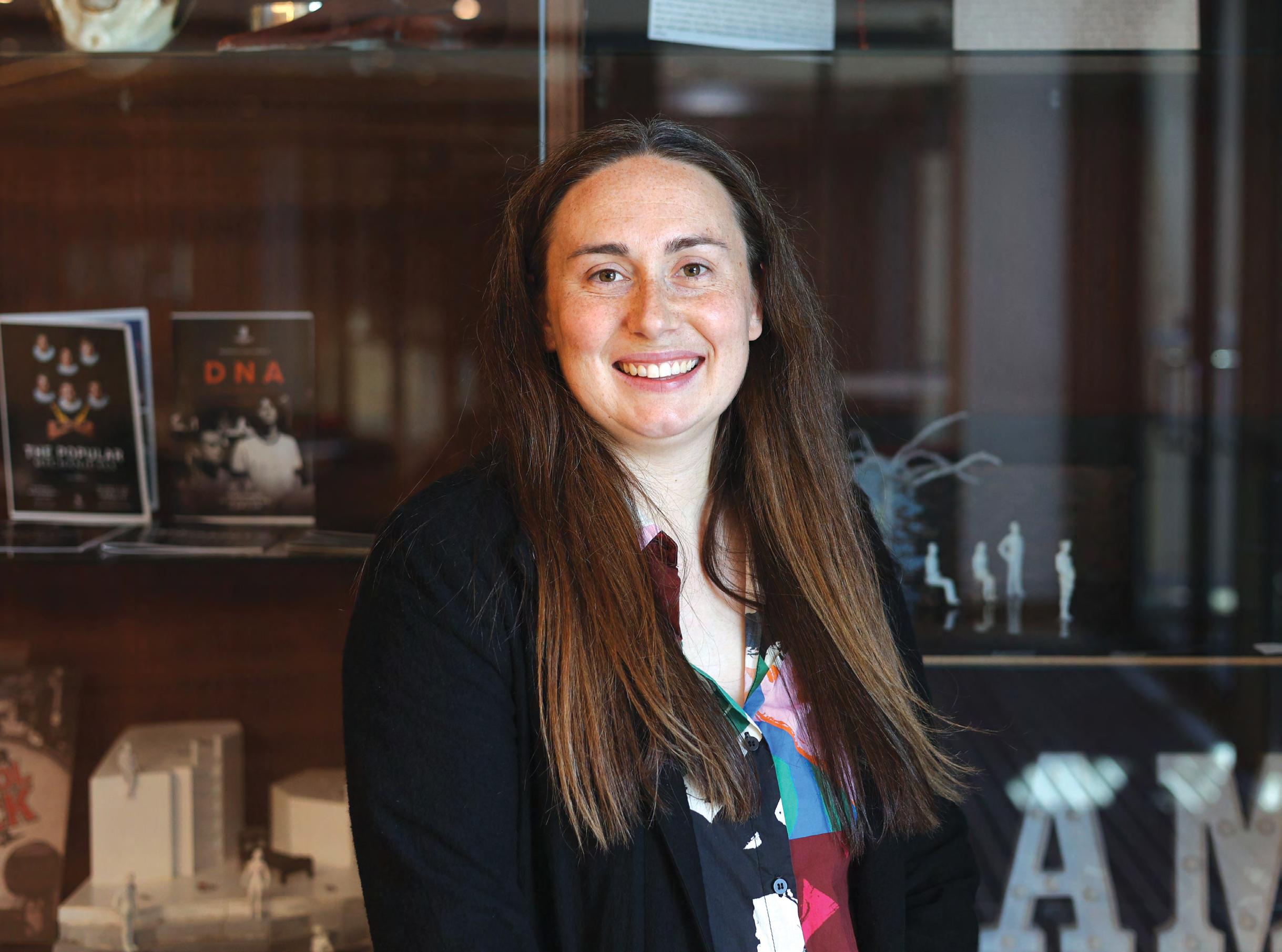
As Head of Perkins House, Hannah brings a deep sense of care and commitment to every student she supports. Hannah’s greatest passion is creating a safe and nurturing environment where students can express themselves and find the guidance they need to grow. Whether it’s offering a listening ear or helping solve challenges, she is fully dedicated to their wellbeing.
AS A DRAMA TEACHER at Cranbrook, Hannah finds immense joy in watching students discover their own love for the craft. With heartfelt enthusiasm, she plays a role in guiding students through performances, helping them build confidence and invaluable life skills. For Hannah, seeing students thrive – both on and off the stage – is what makes their role so deeply fulfilling.
What does your role entail?
I recently began my role as Head of Perkins, and I’ve truly enjoyed every moment so far. My primary responsibility is to ensure the wellbeing of all Perkonians, providing a safe space where they can come to me with any issues. I’m committed to working closely with them to find the best solutions. In addition to this role, I’m also a Drama teacher at Cranbrook, which I absolutely love. I get to spend most of my day surrounded by creative thespians, collaborating to bring engaging performances to life.
What brings you the most joy within this role?
The Perkonians have such a diverse range of talents and skills, and it has been truly rewarding to watch them thrive and grow. What brings me the most joy is seeing students of all ages connecting – whether they’re chatting or playing table tennis together, keeping the House spirit alive through their camaraderie.
As a Drama teacher, my favourite moments come when I see students developing the same passion for Drama that I have. Drama is such a vital subject, equipping students with skills that go far beyond the stage. It helps build confidence, empathy, teamwork, collaboration, problem-solving abilities, creativity, and so much more – skills that are essential in preparing students for the real world
What do you think is the most important aspect of drama in education?
I believe Drama is often underestimated as one of the most valuable subjects in school. In today’s world, many professions and companies seek employees with exceptional soft skills – such as communication, adaptability, and empathy. These are the very core skills that Drama nurtures. It’s not just about performance; it’s about developing qualities that are crucial in any field. In fact, Drama might just be the best subject to prepare students for success in any career path.
What brought you to Cranbrook?
What drew me to Cranbrook was its commitment to providing students with incredible opportunities, particularly in cocurricular Drama. The School fosters a wellrounded approach to education, placing equal emphasis on academics, co-curricular activities, sport, and wellbeing. This holistic focus allows students to explore their passions while developing a broad range of skills, helping them grow into well-rounded individuals.
What do you enjoy most about your role?
As Head of Perkins House, one of my greatest joys is connecting with students beyond the classroom. Whether I’m cheering them on in sports, supporting their co-curricular activities, or watching them engage in House events, it’s the strong sense of community and House spirit that I truly cherish. As a Drama teacher, there’s nothing more rewarding than seeing students experience the thrill of performing a piece they’ve worked so hard to create. Watching their passion for Drama take root and flourish, seeing them light up with pride after a performance – it’s a feeling like no other!
What is your favourite memory of teaching at the Senior School?
One of my favourite memories of teaching at the Senior School was when a giant lizard unexpectedly wandered into a Year 7 classroom. We all had to stay calm and work together to carefully manoeuvre the lizard out of the room. It turned into a fantastic bonding experience, and it was a lighthearted reminder of how essential teamwork can be – even when it comes to rounding up unexpected visitors!
What advice / words of wisdom would you give to parents or students who are passionate about Drama?
My advice is simple: get involved! Cranbrook offers a wide range of exciting opportunities to develop your Drama skills. Whether it’s auditioning for a production, joining the Drama co-curricular programme, or being part of the Student Production Team, there’s truly something for everyone. We’re always on the lookout for passionate students who want to engage with Drama. So, don’t hesitate –reach out to any of the Drama teachers for more information. We’d love to see you take part and share your creativity with us!
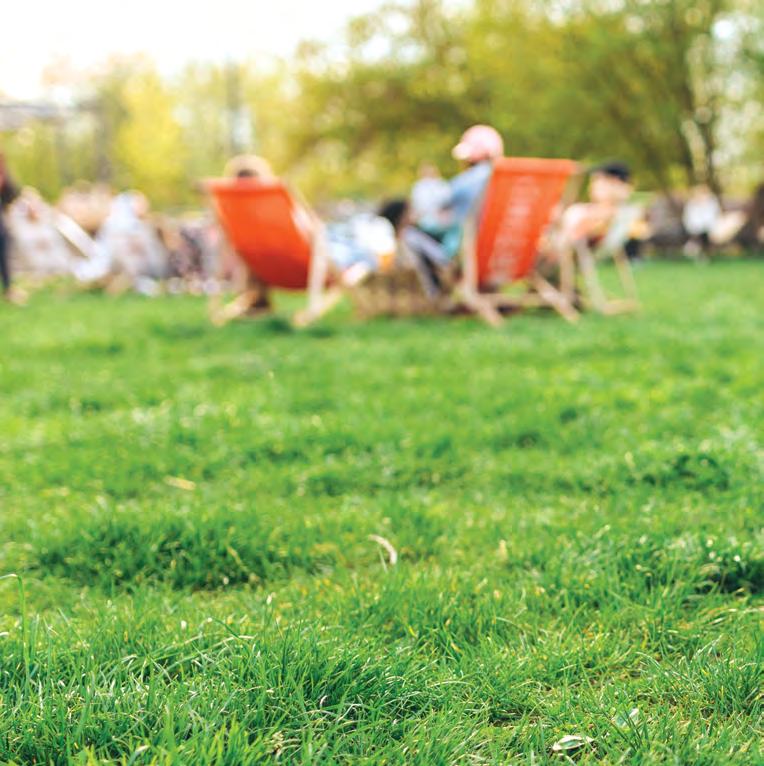
My favourite place is the park right next to my home. It’s a perfect spot for family picnics, where we can relax and enjoy each other’s company. During the summer, we love making the most of the park’s connected pool. There’s nothing better than swimming and indulging in hot chips on a sunny day. It’s a beloved routine that brings us all so much joy.
FAVOURITE
QUOTE
‘The only thing we have to fear is fear itself’
As Franklin Roosevelt once said. I believe this mindset holds many students back – from getting more involved, showing kindness, or taking chances. Yet, it’s often the risks that lead to the most rewarding experiences. Stepping outside of your comfort zone can open up new opportunities and allow you to grow in ways you never expected.

FAVOURITE RECIPE
I love to
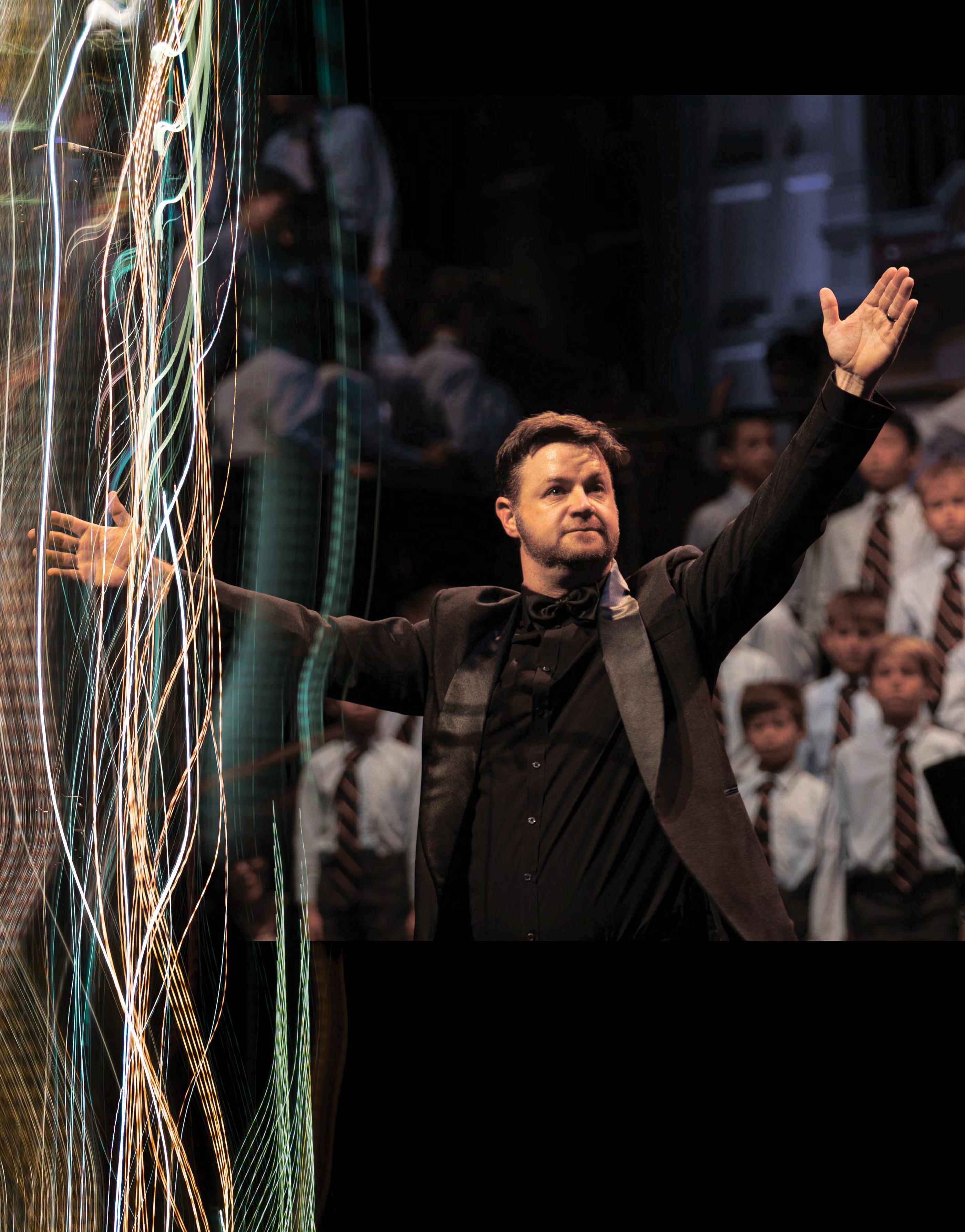
Cranbrook’s annual Music Gala Concert held at the prestigious Sydney Town Hall is a feat woven together from thousands of hours of meticulous planning, scripting, practice, rehearsals, logistics, contingency planning and performance.
IN THIS EDITION OF EQV, we go behind the scenes with Cranbrook’s Director of Music, Phillip Beverley, and cast an eye over how such a magnificent one-night Gala Concert is achieved and delivered to the highest of musical standards. This year’s was entitled Threads, and was no exception.
“We start planning the next Gala Concert, before we have performed our current showcase,” Phil explains.
Bringing together 700 student performers, selecting and adapting musical pieces and considering how we can best deliver these with students from Years 3 to 12, building musical abilities and confidences, scheduling rehearsals, challenging students to organise their personal time by keeping up with schoolwork expectations, home time, sport and their music programme, is a great growth opportunity for all participants, Phil explains.
One of the first steps in Gala Concert planning, is selecting a theme that brings together the artistic scope that Cranbrook wishes to achieve for that year.
“Our dedicated Music team collaborates to make this decision. Sometimes it’s a song title, but in 2024 we chose Threads, to highlight the importance that each member makes to the whole, and how their uniqueness is an essential thread that builds our school community,” says Phil.
In the words of Acting Head of School, Michele Marquet, the Threads theme embraced the ways in which “music weaves the past with us in the present and those to come in the future; it provides a language for communicating where words fail and forges the bonds that enable people to remember more about what we have in common as fellow human beings, than what may be different, no matter where we may hail from, what age we are or what we might believe.”
As part of their growth and development, Cranbrook students are invited to have input into the blending of the chosen theme with musical ideas, and from there, the process becomes quite organic, Phil says. “We have a great team of active musicians
who draw on their past experiences, while also looking to new music and ideas.
“Mostly, we look at what will stretch the students we have, and then we ask ourselves, ‘will a particular piece give students an opportunity to grow musically?’
“The overarching idea is to have parts within some of the massed works that cater for all ability levels. This ensures involvement and success for every student,” Phil continues.
“I’d love to say it’s a breeze to organise these events, however it’s actually one of the most challenging exercises we do at Cranbrook – but the reward is well worth it.”
Threads brought together 700 students performing at the iconic Sydney Town Hall, for an audience of 1000 parents and carers, teachers, staff and other invited guests.
THE ORGANISING TEAM is always looking for new and creative ways to expand the gala programme and in 2024 it included, for the first time, a composition by Cranbrook Year 12 student, Austin Fairfax, titled Journey’s End Austin has gained early entry into the Sydney Conservatorium to study Composition in 2025.
A Cranbrook student since Kindergarten, Austin has performed in 10 gala concerts which has given him “the opportunity to witness the power of music in uniting people from all walks of life, made possible through the collaboration of staff and students. Cranbrook’s Music team has encouraged my passion for composition, allowing me to carve a typically less tread path during my time at Senior School, and one that I hope more students will be able to follow in now.
“My personal style in music is still developing, and I dedicated the Journey’s End to the people who have helped make my journey possible – from Cranbrook staff, to family and friends – I hope it inspires you to take the risk of setting out on a new journey, be it big or small,” Austin said.
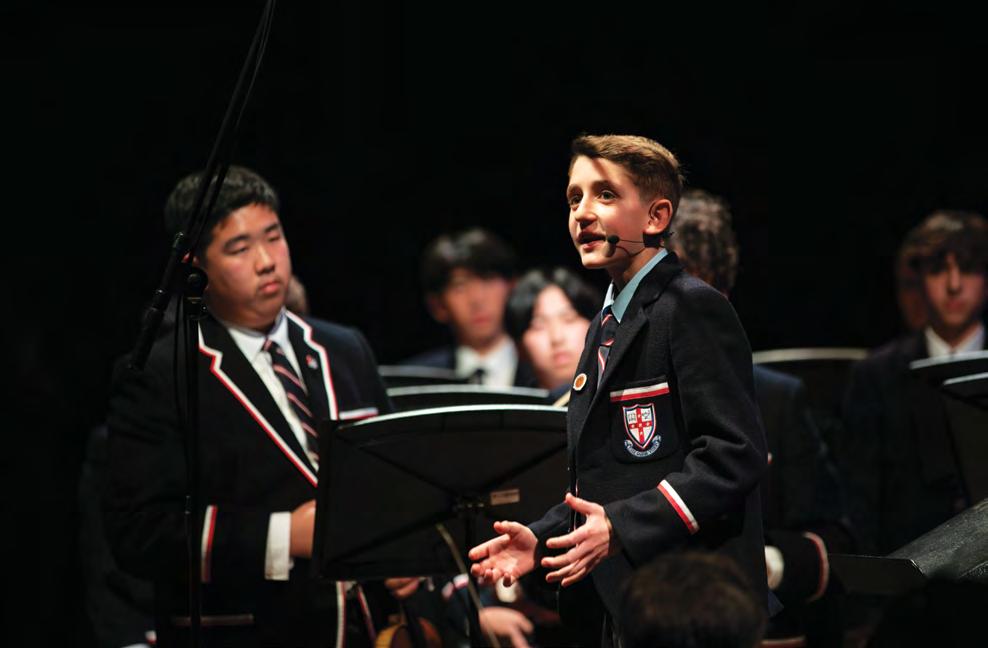
Fellow Year 12 student, Wesley Woodhouse also auditioned and received an early offer to study at the Sydney Conservatorium of Music, in his chosen field, Classical Trombone. He has performed at five gala concerts, allowing him to know how to perform and to know an audience – “without knowledge of how to perform, one may as well be writing a book on burning paper. Through careful trial and error, gala concerts have taught me stage presence as an individual and as a member of a collective. The concerts showcase the most spectacular, joyful and moving content and are justification for the hours of practice and ceaseless tasks of learning to express music,” Wesley explains.
The Threads programme of 18 performances included items from composers dating back to Antonio Vivaldi, through to the 21st century, and for the first time, the art of slam poetry performances.
“We start planning the next Gala Concert, before we have performed our current showcase.”
THE ORGANISING TEAM also has many support mechanisms in place to help students with performance nerves. “We find the best way to achieve this is by offering a sheer amount of performance opportunities at soirée performances and lunchtime concert practices. which help to normalise the experience.
“We also acknowledge that stress and pressure of the moment is innate in the lives of musicians and music making. These should not be viewed as negative but rather, they should be channelled into a positive outcome that occurs from that pressure. This is a vital part of the learning experience, and it helps to build capacity, resilience and character, not just as a musician, but as a person,” Phil explains.
YEAR 7 STUDENT and slam poet, Thomas Altundag performed his original work, Tick Tock, The Rhythm of Change. “I used the current environmental crisis and the need to create a sustainable future as my inspiration,” Thomas said. “My goal was to leave the audience with a resonant message that every moment counts and together we can rewrite the wrongs and shape a hopeful future for generations to come.
“Cranbrook teachers have encouraged slam poetry as a dynamic performance art, empowering us to use our words to tackle critical issues like global warming. Their support has guided us from the classroom to larger stages, where our voices can resonate and inspire change. Through this art form, they have shown us the impact our poetry can have in sparking meaningful conversations,” Thomas explains.
Thomas does not play a musical instrument, but the art of slam poetry allowed him to perform and be an active part of the gala performance which he says was a wonderful experience.
Phil explains that the School Motto, Esse Quam Videri, is at the heart of the Gala Concert. “Few live out the School Motto on such a regular basis than our school musicians. You truly need to be, rather than to seem to be, when you take the stage.”
Behind the scenes there is an enormous engine room of teachers, staff and students who support the coordination and production of the Gala Concert.
Teaching and coordinating orchestral and performance pieces, organising rehearsals around other school activities, writing, designing and printing the programme, promotion, printing and selling performance tickets, lighting and stage management considerations, the logistics of transporting all students, instruments and props to Town Hall, are all pivotal activities that must occur like clockwork, to deliver a seamless, spectacular concert.
“We have contingency plans in place,” Phil says. “We need to plan for the unexpected. Given the concert is in winter, we may have performers absent with the flu for example, or there are unexpected clashes and organisation. That’s why we brief students early about prioritising their commitments and making sure they communicate early. Sometimes this works, and as the students get older, we see them improve year on year. So many things can go array, and the organising team must be nimble, calm and professional, to cater for last-minute contingencies,” Phil says.
There are also funny or light bulb moments that occur in the journey. “The mistakes made along the way by both staff and students makes for a fun and creative learning journey. Nobody comes to this fully formed. It’s the moments of relational interaction that help build the wonderful culture that inspires us to keep going with such major projects,” Phil explains.
As the Gala Concert maestro behind the event, what does Phil hope that the gala performances achieve? “Each year my hope is simple – that students have an exhilarating experience and form wonderful memories that last a lifetime. For parents, it is showcasing their child’s ability and their commitment and contribution to something bigger than themselves.”
There is little or no downtime for the Gala Concert team. There is a major debrief after each concert so the team learns from and makes improvements that can only come from critical evaluation. “It’s an excellent way for the Cranbrook teachers and support staff to share ideas and keep communication open,” Phil says.
With planning already well underway for the 2025 Gala Concert on 16 June, Phil says “we can’t wait to share it with you, plus we are already thinking about how we can expand our showcase when Cranbrook becomes coeducational in 2026.”
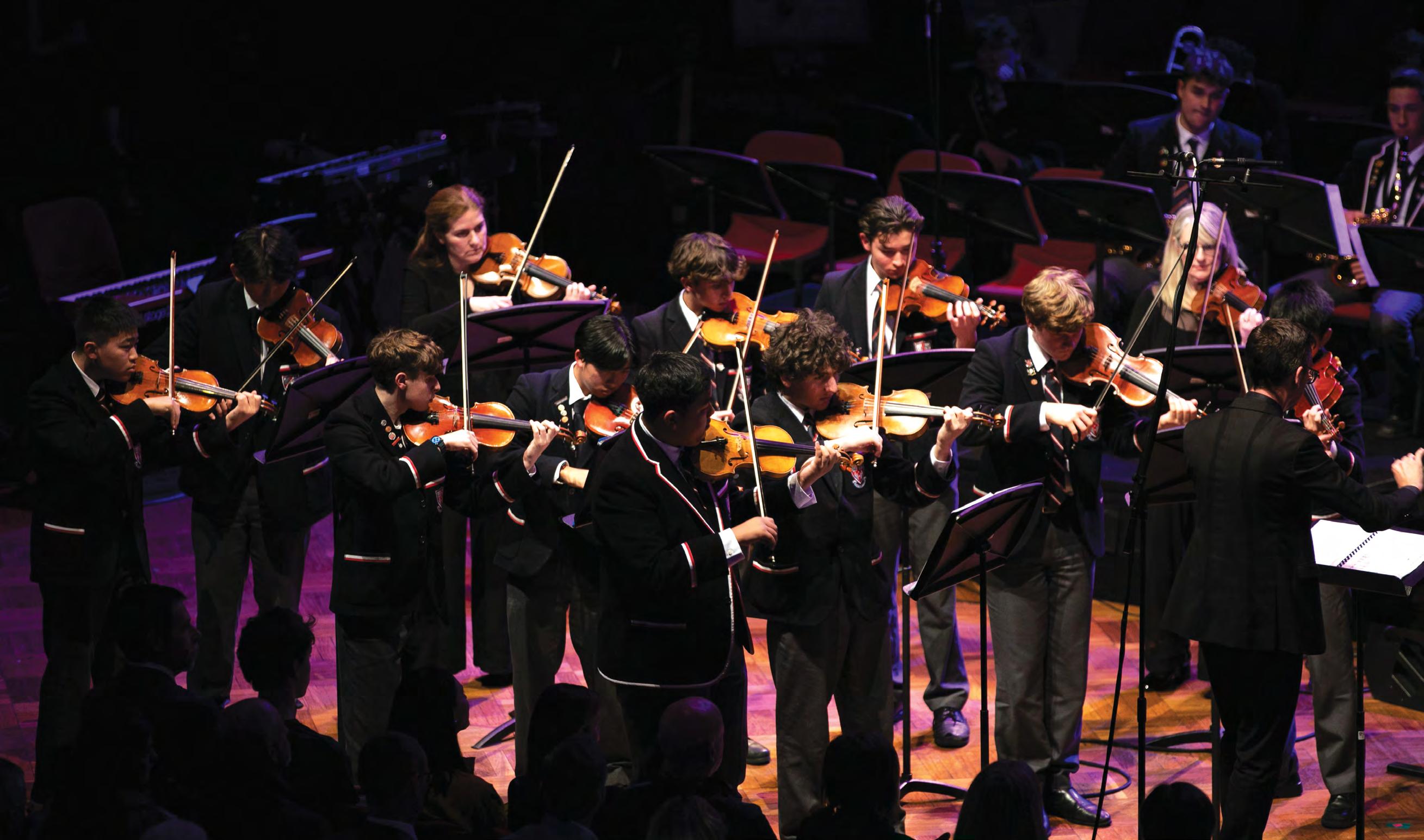
“Few live out the School Motto on such a regular basis than our school musicians. You truly need to be, rather than to seem to be, when you take the stage.”

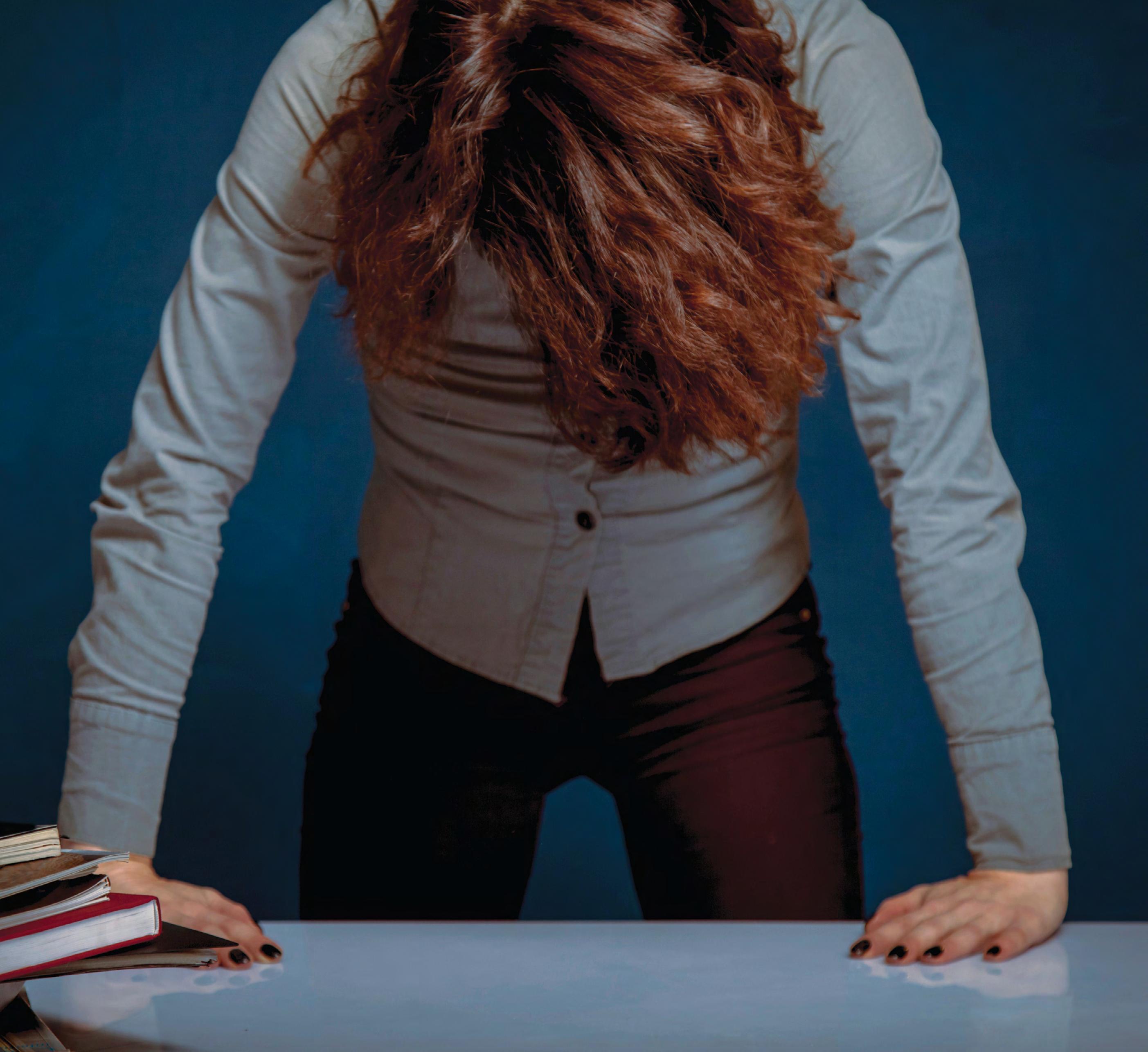
Every person is unique, and every student has their own story. As future, current or Old Cranbrookians you will recognise that this is strongly reflected in Cranbrook’s ethos of respect for the individual and respect for the integrity of differences, practised everyday by teachers and students alike.
THESE SAME VALUES are fundamental in navigating the care, welfare, safety and security of individual Cranbrook students, especially when distress or trauma occurs.
Within our fast-paced lives, adults and children face grief, loss or distress, traumas like the death of a family member, challenges within friendship groups, and a myriad of other situations. As individuals, the way each person behaves, responds and navigates distress and trauma is also unique.
Every working day at Cranbrook, there are 1800 students from Pre-School to Year 12, each with their own unique story and their own level of emotional development. Cranbrook’s dedicated teaching staff
are attuned to noticing uncharacteristic behaviour in their classrooms and know this may be a sign of distress or trauma in an individual’s life. Teachers are trained to identify and investigate why a student is showing heightened conduct and work with them in a trusted and empathetic way, to de-escalate their behaviour and restore their emotional wellbeing and classroom learning. Identifying and de-escalating distress or trauma behaviours using verbal intervention strategies was the topic of a Cranbrook Teacher’s Teaching Teachers (CTTT) seminar earlier this year, led by Director of Students, Peter Young and General Duties Master, Lloyd Owusu.
Peter and Lloyd shared their key learnings to a packed and engaged CTTT seminar after attending a Crisis Prevention Institute (CPI) Verbal Intervention training course. Their key learnings include using a person-centre and trauma informed approach, knowing, identifying and appropriately responding to the four levels of the Crisis Management Model, using integrated experience and rational detachment to address individual issues, and using suitable communication strategies to de-escalate behaviours and return the student to a positive, engaged learning environment.
Peter says that as teachers, we recognise and understand that uncharacteristic behaviours communicate distress, and that by knowing and recognising this “we stop viewing the behaviour as challenging to us and identify that these behavioural signs can mean that something is happening in the student’s life.”
Supporting this, Lloyd explains “teachers, cannot control what is happening in a student’s life, but what we can do is to assist students, by being in control, and working on de-escalating their behaviour.” This requires the application of integrated experience, rational detachment and using proven communication skills.
Peter says that while much of the verbal intervention programme was common sense, and that Cranbrook teachers instinctively perform these actions every day as part of their student leadership and nurturing roles, it is always good to refresh and refocus on proven approaches to deescalate behaviour. Lloyd says it is equally important to reach out to a trusted colleague to help navigate challenging situations, “because two heads are better than one.”
IN PART, BUILDING TRUST comes from the application of integrated experience, which means behaviour influences behaviour.
We may not always know how to respond to behaviours, but we know that our reaction will most likely influence the outcome. Therefore, it is important that Cranbrook teachers take the lead in these situations and apply rational detachment – that is to be calm, to show empathy, to remain non-judgemental, to be fully present and actively listen to the student in distress.
“Sometimes we need to stop, take a deep breath and plan how we may navigate the situation to build the student’s trust in us,” Lloyd explains. “When we rationally detach, we can objectively identify the crisis level the student is in and choose the best approach for that crisis level. We achieve this by remaining professional and managing our own behaviour and attitude. Put simply, rational detachment allows your ‘thinking brain’ to take charge of your ‘emotional brain’ during moments of crisis. You cannot control the student’s distress, but you can control yourself,” Lloyd says. The end goal is to de-escalate the behaviour and restore emotional wellbeing so the student can once again, focus and learn.
THE CPI PROGRAMME OUTLINES four communication considerations as part of the verbal intervention strategies – verbal, paraverbal, non-verbal and listening with empathy.
Verbal communication should be positive and respectful; it should acknowledge the feelings of the student and be phrased in short, simple, and clear sentences.
Then second consideration is the paraverbal, encompassing the way we speak with a student, the use of caring, supportive tones and at an appropriate volume and speed that allows the student to process the message.
The power of non-verbal communication skills, the third consideration, cannot be understated. Give the student enough personal space and position yourself at their height; if they are seated, be seated. Be mindful of your facial expressions, use appropriate eye contact and be conscious of your hand gestures and body posture.
When it comes to listening with empathy, it is vital to remain non-judgemental, to use open questions, to give the student your full attention, to allow time for silence and reflection and to paraphrase what you understand from the student’s responses. Combined, these strategies show support and build trust, and trust generally deescalates the person-centred, trauma focused situation, and allows the student to return to full engagement in classroom learning.
Recapping, Peter says positive, empathetic verbal intervention should take place early to avoid escalation of emotions. “It is about taking the time to know a bit more about the student, acknowledging their uniqueness, being non-judgemental and respecting their dignity, their need to be heard and importantly, understood in a calming environment.
“When combined, these approaches should allow the student to de-escalate their behaviour and to process their distress, to allow their focus to return, to restore their typical behaviours, learning and participation in the classroom, while empowering them to better understand and regulate themselves back to a place where they are no longer anxious or distressed, and are able to learn.
“Remember we are individual; we are unique, and each of us has our own story and emotional development. The way we approach a primary student, a Year 7 student and a Year 12 student is different, we don’t argue with them as we will never win,” Peter says, instead we acknowledge their uniqueness, we respect their individualism and dignity and we create a path for them to build resilience and emotional wellbeing.
The CPI Crisis Development Model identifies four crisis development behaviour levels, the first is anxiety, then defensive, risk behaviours and lastly, tension reduction. The aim is identify and deescalate the situation early and restore emotional wellbeing. Positive and swift intervention by gaining the student’s trust generally halts any escalation to stages two, three and four.
Fidgeting, nervous movements, sighing or shutting down are typical signs of anxiety and the CPI integrated experience approach recommends teachers use empathetic, active listening and being non-judgemental to build trust. This calm approach helps the student to meet their individual needs and address the cause of their behaviour, after all, the student knows themselves best, Peter says.
If a student is shouting, showing a lack of respect or acting in a threatening manner in the classroom, then they are exhibiting classic defensive signs which is stage two of the Criss Development Model.
If this occurs it is important for the teacher to intervene with clear direction and instructions by giving the student simple and reasonable choices that help them consider positive behaviours and outcomes. Peter gives the example of “what do you want to do, do you want to go and see your Head of House, or do you want to take a walk outside?” This is the first step towards de-escalating the student’s behaviour, with the ultimate goal being to return them to normal behaviour and build their resilience so they are aware of, and better placed to manage their distress or trauma.
“Thankfully at Cranbrook we rarely have students reaching crisis levels three and four where they show risky behaviours,” Peter explains. “We don’t believe we have any students who are nasty. There is a reason why they act out, each student has experienced different things, some have experienced trauma which affects the brain, and it’s up to us to respond and find a way to gain trust from a student.
“Students want to be listened to and understood; we treat them with dignity. We support, we listen, and we don’t judge,” Peter continues.
Cranbrook School is proud to be at the forefront of reconciliation efforts, dedicated to fostering meaningful relationships, respecting cultural traditions, and supporting Indigenous communities through conscious philanthropy.
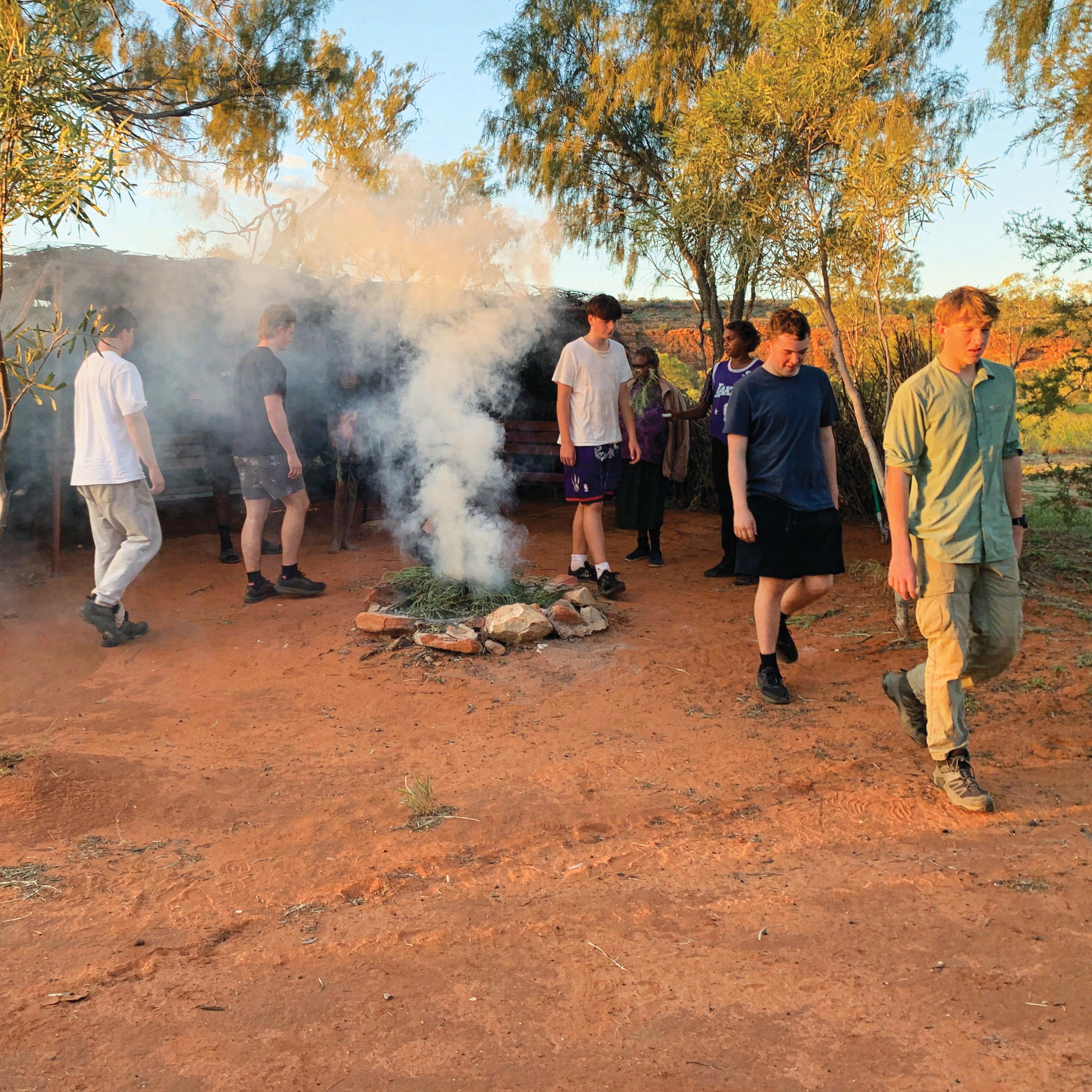
THOMAS MCDONNELL , Cranbrook’s Indigenous Education Coordinator, explains how our School’s Reconciliation Action Plan (RAP) is built on the principles of understanding, active listening, and genuine support for initiatives that create tangible, positive outcomes: “This commitment is not just about words; it’s about action, community involvement, and creating a lasting impact,” he says.
Conscious Philanthropy: Listening, Understanding, and Acting
AT THE HEART OF Cranbrook’s RAP is the concept of conscious philanthropy. This approach encourages our community to take the time to listen and understand the needs and aspirations of Indigenous communities. Rather than imposing external solutions, we engage in meaningful dialogue, raising funds, and participating in initiatives that have concrete, measurable results. Thomas explains that one of our key projects is raising $300,000 to support Indigenous education and cultural preservation efforts, ensuring that our contributions lead to better outcomes for all involved: “We are seeking to be a founding partner school with the Aboriginally owned educationally centred business, Culture College, in order to develop an evocative and spiritually moving learning experience in the heart of Sydney, on the culturally significant site of the Q-Station out at the Heads. This will be a revolutionary experiential learning experience On Country and it will create 5-10 new jobs per day for Culture for Traditional Knowledge Holders to share their deep knowledge,” explains Thomas. This will not only be an important thread that is woven through a Cranbrook education, but by assisting in the creation of this educational offering, other students, residents, and visitors to Sydney will be able to participate and share in this experience, a place where Water and Land Country meets, and cross-cultural contact occurred.
AN ESSENTIAL ASPECT of our RAP is the respect and preservation of sacred Indigenous sites. We recognise the importance of these places in Aboriginal culture and tradition, and our initiatives ensure that these sites are protected and respected. Thomas explains that as Cranbrook transitions to becoming a coeducational school, girls from our school will visit these sacred sites, and will always be accompanied by a woman and observing cultural protocols. This practice not only honours Indigenous traditions but also provides our students with a deep, first-hand understanding of the significance of these sacred places.
“Cranbrook continues to be engaged in an educational partnership with Wiradjuri Elder Aunty Sharon Riley deepening our connection to our campus at Wolgan Valley and surrounding significant sites such as Maiyingu Marragu, creating learning experiences that are consistent with Wiradjuri values. Further exploration into Australia’s powerful landscape, songlines, and spaces of energy are encountered in our annual cultural immersion trips to Central Australia and Arnhem Land. These are unparallel opportunities for rites of passages for our students in their transition into young adulthood, discovering their place in the world and feeling more centred in their own being,” explains Thomas.
Supporting Aboriginal Homelands: Bridging the Urban-Rural Divide
ONE OF THE KEY GOALS for our RAP is to support the return to Aboriginal homelands, the traditional areas of occupation for many Indigenous communities. This initiative is not about vague rhetoric; it’s about providing practical solutions that enhance the quality of life in these communities, allowing them to stay connected with the wider world while remaining on their traditional lands.
Cranbrook has had a relationship with the community at Lilla in the Northern Territory for more than ten years. Dr David Thomas, our School Historian, is currently spearheading an initiative to purchase a tractor for the community so important work can be done in this beautiful but remote part of Australia.
Thomas explains that we are continuing to build on our friendship with the people at Lilla: “In 2023 Cranbrook students who returned from the with a desire to give back, hosted an evening themed ‘Connections’ which raised funds for the installation of starlink at Ulpinyali so all members of the community can be connected to the world, whilst remaining on Country. Recently, Mr Robilliard on behalf of the Cranbrook Parent Soccer Committee made a donation to the school at Papunya, which is part of the same songline as Lilla, Ulpinyali, and Areyonga. Traveling up to Northeast Arnhem Land, Yolnu Country, Cranbrook has also visited Nyinyikay, and is keen to support the Yolnu community in their desire to return to the Homeland with many families and create a thriving artistic and cultural tourism opportunity as they continue to walk in the steps of their Ancestors, whilst sharing their profound culture with other Australians.”

CRANBROOK SCHOOL IS PROUD to be a founding partner in a groundbreaking learning-on-country experience in Manly. This programme offers Junior and Senior School students the opportunity to engage in immersive cultural learning experiences outside the traditional classroom setting. The Q Station, a historically significant site, serves as an experiential space where students participate in various workshops led by First Nations people. These workshops cover topics such as traditional dance and cultural practices, offering a level of pragmatism that makes the learning experience both practical and profound.
The evocative space of learning on Country allows students to engage deeply with Indigenous culture, history, and traditions. This journey of learning is not just about acquiring knowledge; it is about developing empathy, understanding, and respect for the rich cultural heritage of Australia’s First Nations Peoples. Through this programme, students embark on a local, regional, and national journey that helps them connect with Indigenous culture and history in a meaningful way.
CRANBROOK’S RAP IS ALSO focused on investing in Indigenous education. Our goal is to ensure that Indigenous children can stay connected to their culture, language, and families, rather than being removed from their communities. By investing in education on Country, we are supporting selfdetermination and ensuring that Indigenous communities have the resources they need to thrive.
We are also committed to supporting Indigenous businesses, such as Culture College, which provides educational programmes that empower Indigenous youth. By collaborating with these companies, we help create job opportunities and support the economic development of Indigenous communities.
A KEY COMPONENT of our RAP is the belief that Reconciliation is not just about the present; it is about creating a generational shift. We are dedicated to teaching history in a way that keeps it alive, ensuring that future generations understand and respect the cultural heritage of Australia’s First Nations People. Through conversations, cultural experiences, and educational programmes, we aim to instil in our students a deep appreciation for Indigenous culture and a commitment to supporting reconciliation efforts and elevating our thinking of what is possible, and how we can foster a richer and fairer Australia for all.
CRANBROOK SCHOOL’S RECONCILIATION Action Plan is more than a set of goals; it is a journey of learning, understanding, and empowerment. Through conscious philanthropy, cultural respect, and a commitment to supporting Indigenous education and self-determination, we are working to make a real difference in the lives of Australia’s First Nations People. Our RAP is a testament to our belief that Reconciliation is about action, empathy, truth telling, and creating a future where all Australians can thrive together.
EMBEDDING ABORIGINAL AND TORRES STRAIT ISLANDER HISTORY AND CULTURE IN THE CURRICULUM
Ms Kate Kovalik in the English Department has created an excellent unit of study in Year 10: Visions of Australia.
This dynamic unit represents a marked improvement in fostering critical thinking skills and sophisticated postcolonial analysis. Additionally, Mr Nick Tsoukatos has spearheaded a much-needed Teacher Inquiry Group (TIG) applied research project, seeking to encourage and measure cultural responsiveness, and greater epistemic awareness in Year 10 Science students.
These are two examples of passionate educators, working within the curriculum and embodying genuine pedagogical innovation.

At Cranbrook we celebrate the bringing together of diverse learners, each with their own learning challenges and strategies. This includes students with ADHD, anxiety, mild intellectual disability (ID) or autism (ASD), for example.

IT IS OUR TEACHERS’ responsibility to observe and engage with individuals, to assess their needs and deliver learning techniques that capture their attention and deliver desired learning outcomes.
Cranbrook Senior School Art Teacher, Julian Wrigley, shares the lightbulb moment that encouraged him to complete a Graduate Certificate in Education (Inclusion Education) at Queensland University of Technology, to equip him with enhanced learning approaches and techniques that inspire students with neurodivergent minds to learn and thrive.
“There was a student in my class distracting me with disruptive behaviour which took my focus away from other students. I considered why I was getting worked up and discovered that it wasn’t the student who needed to change, it was me who needed to change – it was a great lightbulb moment,” says Julian.
The Inclusion Education course encourages teachers to celebrate diverse learners rather than wanting to change them. This is achieved by shifting one’s mindset to recognise each student’s individual strengths, understanding their points of view and accepting their needs. Enacting these principles is vital to transforming the student’s classroom engagement.
Neurodiversity promotes embracing and celebrating the various ways peoples’ brains work and rejects the idea of deficits or shortcomings, according to a Child Mind Institute (www.childmind.org) article. It encourages acceptance of the different ways individuals perceive and interact with the world. The apple and pear picture illustrates this.

There are around 800,000 people in Australia living with attention-deficit/ hyperactivity disorder (ADHD) and according to Professor Michael G Sawyer, around 6-10% of Australian children and adolescents have ADHD.
Neurodivergent students have different strengths and challenges, so it is important to create an environment that fosters understanding and minimises anxiety. Simple techniques like eye contact, gestures, and visual or verbal prompts may be used to get their full attention before giving clear instructions or speaking with them. Actively doing this reduces anxiety, builds trust, and allows the student to focus on clear goals.
Three-tier support for diverse learners
A KEY PART OF THE COURSE was understanding and utilising Multi-Tiered Systems of Support (MTSS) which is a whole school, prevention and evidence-based framework for guiding classroom teachers.
MTSS has three tiers – Tier 1 students are neurotypical and the majority (82-94%); Tier 2 students (5-10%) require supplemented learning intervention and Tier 3 students (1-8%) require individual learning plans. Varying teaching strategies ensure that lessons are engaging, inclusive and accessible to all learners to accommodate different learning styles.
Neurodivergent Tier 3 students may have academic, social, emotional, and/or behavioural needs and so individual learning plans are delivered in an inclusive learning space.
Establishing a structured classroom environment with consistent routines and clear expectations provides stability, which is crucial for students with ADHD, ID and ASD.
Utilising these techniques plus offering choices, providing extra help when needed, using feedback and rewarding activities further supports the learning journey at Cranbrook, Julian says. By adding parent and carer collaboration and promoting selfmanagement skills, we equip our students to thrive and succeed academically and socially. YEAR
Julian explains “each student has unique needs. I start by asking how I can support them in the classroom, then tailoring structures to their learning style to reduce classroom management challenges. As a teacher, it requires me to be super prepared, to provide two or three activities in a lesson, always remaining calm, limiting responses to their constant chatter, plus observing any distractions that may impact their focus, and having things ready to switch it up if they become unsettled.”
“By creating adaptive learning environments that are physically and emotionally supportive and encouraging collaborative learning and peer interaction to foster understanding and empathy, we can truly celebrate the individuality and diversity of each Cranbrook student”

Tier 2 students, typically between 5-10% of a student population, require supplemental intervention for improved learning outcomes. By using preventive intervention through targeted support, small group settings, breaking down subjects into smaller learning outcomes, modelling concepts, giving worked examples so students know what is expected of them and providing opportunities for guided and independent practice, all contribute to improved learning.
The Tier 1 approach accommodates the needs and abilities of all students, with teachers intentionally designing tasks achievable for all students based on multiple learning needs delivered in a proactive and supportive environment.
The approach differs slightly for Cranbrook students with mild ID or ASD, Julian says. “I have found that getting to know a student from their independent learning plan, lesson observation and personal interests, and then applying strategies designed to their interests, boosts motivation and
confidence, resulting in big and small goal achievements for the student,” Julian says.
If a student suffers from anxiety, then the first steps are empathy and providing a safe and calm classroom environment. “Using emotional intelligence and reversing roles can give teachers insight into how students perform and react in a busy classroom. Simple things like reducing noise or overhead lighting can lessen anxiety, and then we slowly encourage the student to participate in group activities, and connect them with Cranbrook peers with similar interests, to increase their confidence,” Julian explains.
JULIAN EMPHASISES the importance of closely monitoring and reporting on explicit teaching to understand each student’s individual progress. This involves students actively engaging in tasks designed to improve a specific skill.
“We can modify the curriculum by reducing content or replacing it with language attuned to the student’s learning development.
A
BUILD TRUST AND INSPIRE LEARNING
1. Ask student how you can support them
2. Tailor structures for the learning style
3. Ongoing discussion and assessment
SUPPORT IS KEY
– Establish classroom expectations
– Set simple and clear goals
– Simplify instructions and learning materials
– Keep instructions short and concise
– Include a variety of short activities
– Provide sample models of expected outcome
– Use a sound signal when it’s time to pack up
– Provide rest breaks
– Display visible instructions when possible
Varying formats, through visual, auditory and tactile stimulus, also assists along with integrating diverse perspectives and cultural relevance to engage all students. By providing clear, structured learning paths and support systems we actively assist Cranbrook students with different learning needs,” he says.
Pedagogy, assessment, and learning environments require flexible teaching strategies that cater to diverse learning preferences, such as discussions, group work and hands-on activities. By incorporating ongoing formative assessments to track progress, and adjusting teaching methods based on results, we achieve better outcomes and can proudly celebrate our diverse learners.
“By creating adaptive learning environments that are physically and emotionally supportive and encouraging collaborative learning and peer interaction to foster understanding and empathy, we can truly celebrate the individuality and diversity of each Cranbrook student. Every student is unique. Through observation, building trust and analysing data we gain insights into each student’s strengths and challenges. When we collaborate with Cranbrook students, families and carers and support staff, we gain further insight. When we combine this knowledge and insight with inclusive education tools and strategies, we create an effective learning environment that encourages growth and development,” Julian says.
Add professional development opportunities like the Inclusion Education course, sharing those learnings with peers, and working together to re-think, diversify and increase our teaching strategies, then Cranbrook continues to pave the way for greater inclusive and equitable education outcomes for all students.
This delivers Cranbrook students who are better placed for their future journeys in our rapidly changing world.
IF THE ULTIMATE GOAL OF EDUCATION IS WHAT KIND OF HUMAN OUR CHILDREN BECOME AS THEY GROW UP, IT WILL SHAPE OUR PERSPECTIVE ON WHAT CONSTITUTES AN OUTSTANDING EDUCATION AND WILL BRING INTO FOCUS THE EXPERIENCES A CHILD HAS AS THEY MOVE THROUGH A SCHOOL, RATHER THAN VALUE BEING MADE PURELY ON THE RESULTS ATTAINED IN THE FINAL YEAR OF SCHOOLING.
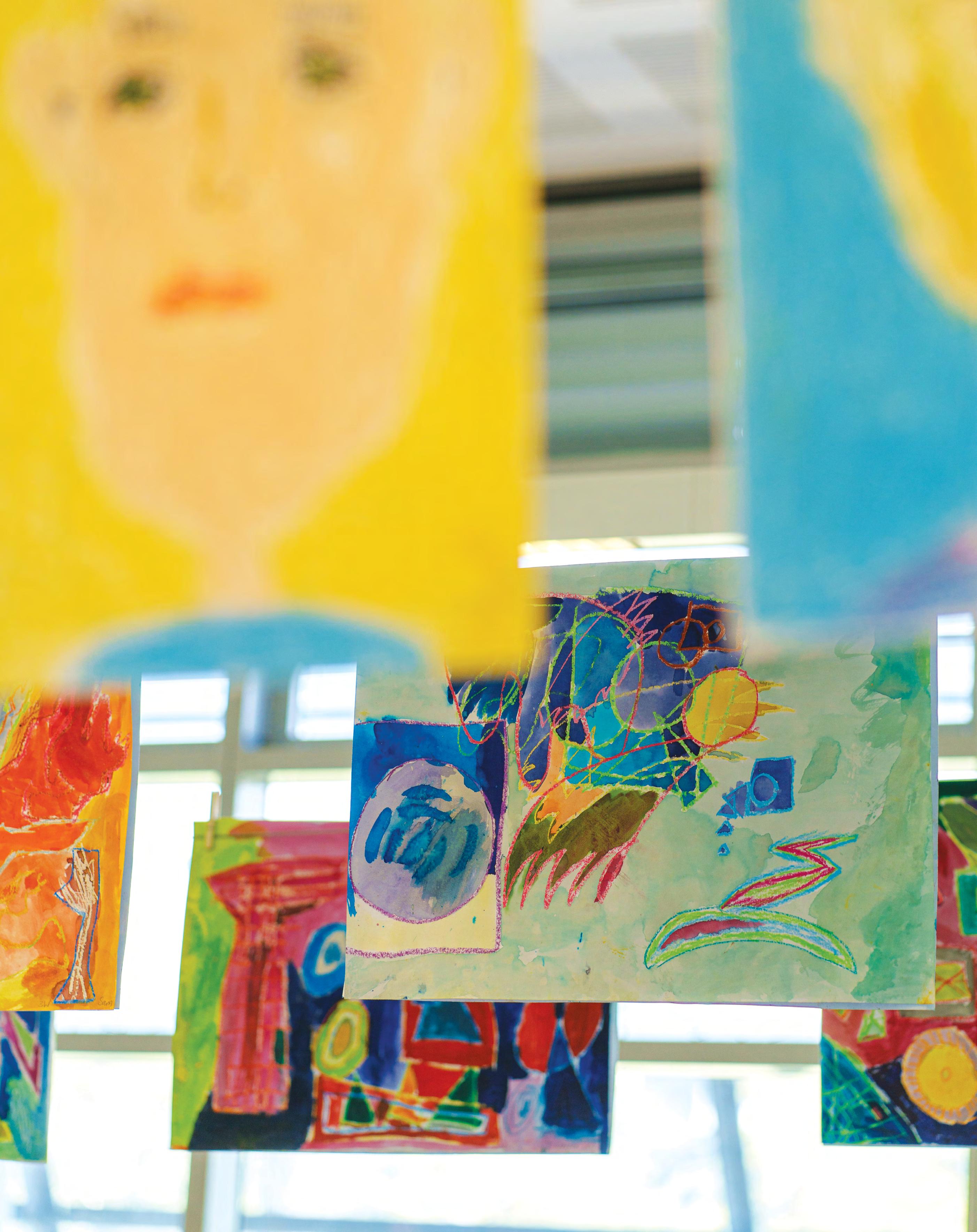
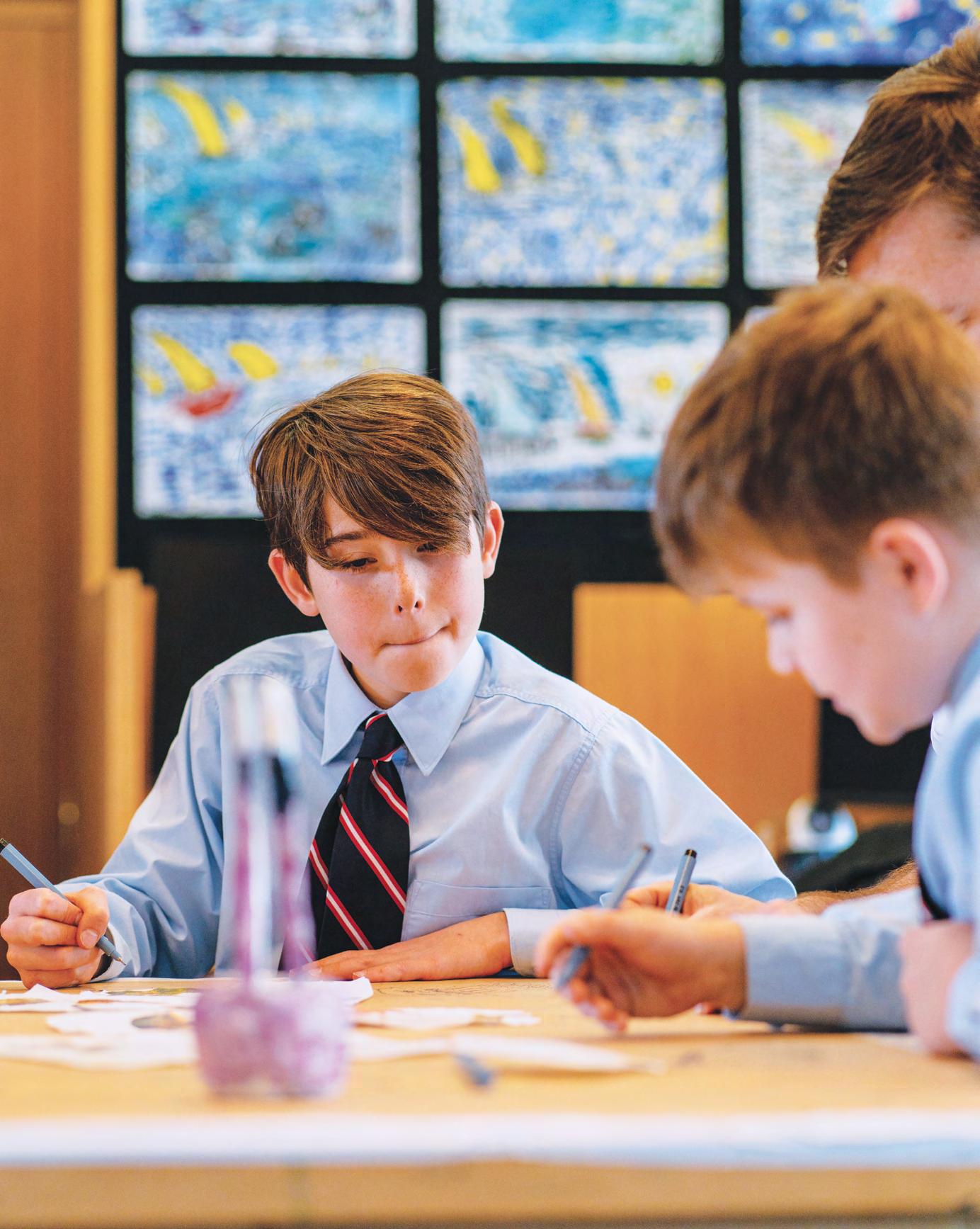
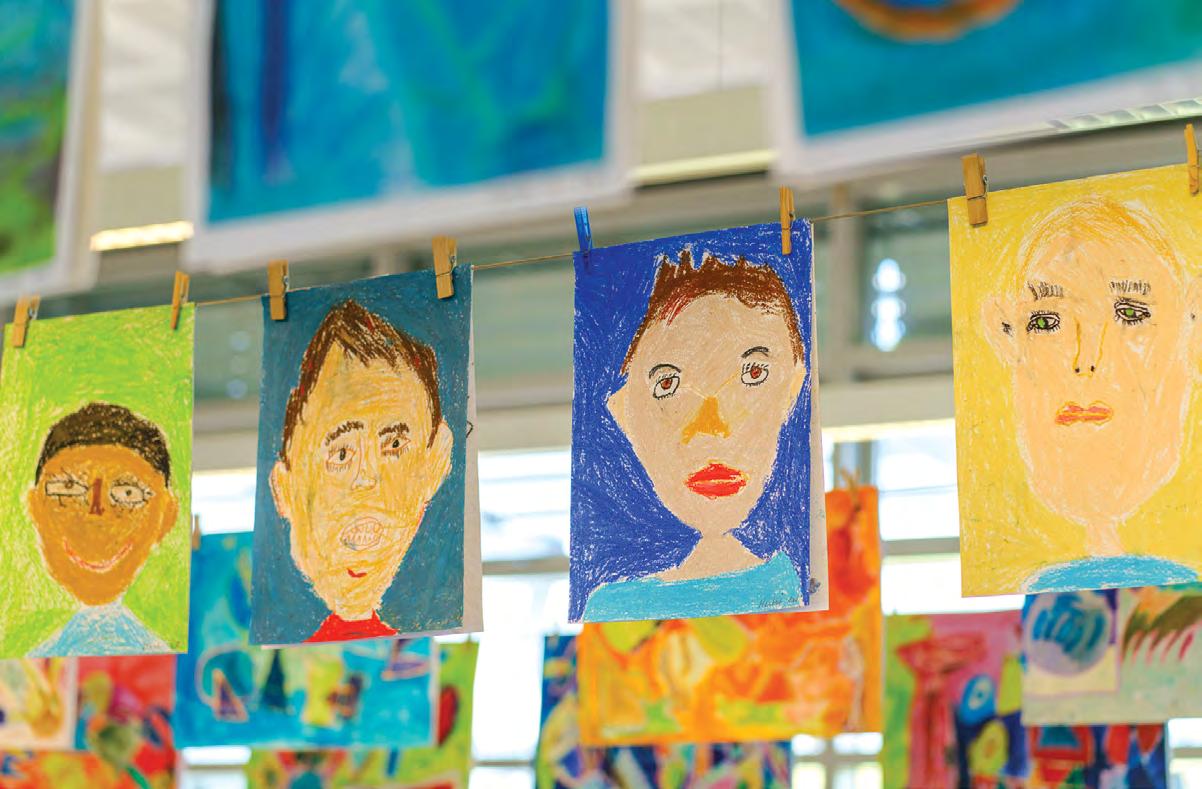

SINCE ITS VERY BEGINNING, CRANBROOK HAS ALWAYS ESPOUSED AN EDUCATIONAL PHILOSOPHY WHICH PROMOTES BREADTH IN THE LIBERAL TRADITION: AN EQUAL VALUING OF ACADEMIC STRENGTH, GENUINE OPPORTUNITIES FOR PHYSICAL DEVELOPMENT AND EXPERIENCES ACROSS THE ARTS, AND A PLACE FOR PERSONAL SPIRITUAL EXPLORATION AND REFLECTION. BOTH IN THE PAST AND NOW, THE SCHOOL BELIEVES THIS IS THE BEST WAY TO HELP DEVELOP WELLBALANCED, WELL-ROUNDED HUMANS, WRITES MICHELE MARQUET, ACTING HEAD OF SCHOOL.
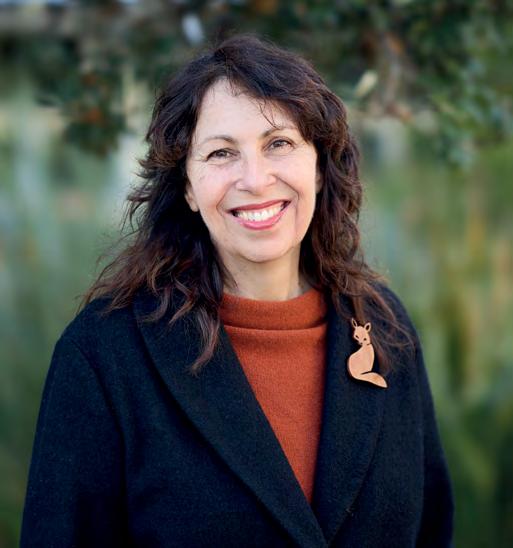
EDUCATION IS NOT just about focusing on academics or physical development; it’s about nurturing the whole child. That nurturing comes through engaging in a broad variety of subjects and activities that contribute to a child’s overall development. Genuine and repeated experiences across the Arts enhance creativity and imagination. Participation in the Arts encourages children to think outside the box and express themselves creatively, utilising their imagination and by bringing their ideas to life. The Arts play a crucial role in early and later education by providing children with unique opportunities to explore, experience and create, and come to understand human experience through different lenses.
Engagement in the Arts from the youngest age and continuing it throughout a student’s growth to adulthood, supports the development of problem-solving and critical thinking skills, as well as teamwork. The Arts challenge children to solve problems, such as figuring out how to represent a concept visually or how to perform a piece of music solo or with others. Performing in a play or singing in a choir teaches children the value of teamwork, cooperation and communication. All these types of activities which form the core of our Arts programmes from across Pre-School to Year 6, help develop critical thinking and problem-solving skills by providing the chance to engage frequently with others in real scenarios, discuss and face issues that arise and develop solutions through trial and error. These so-called soft skills are essential for life beyond the school gates and our Arts programme provide significant opportunities to develop these vital capacities.
Learning and practising any artistic skill requires focus and attention to detail. Even the development of fine motor skills can be enhanced through many different Arts experiences –playing instruments, painting and drawing are so important in a child’s early skills development.
Remembering the steps in a dance routine or the lines in a play or for a poetry performance improve memory and concentration, providing opportunities to foster two of the most important key components of learning. Honed through such situations, these skills are transferable to other areas of a student’s education and life outside school. The Arts can also provide effective ways for students with diverse learning needs to demonstrate their understanding through creative and unique modes, as well as offering a variety of ways for children to engage with and comprehend more complex academic concepts. The Arts can provide a way into grasping such concepts that may be otherwise be locked off for certain kinds of learners.
THE VALUE OF BREADTH in education is increasingly supported by research. Fascinatingly, English, Mathematics and Science skills and development have been shown to be enhanced significantly through quality sequential teaching of the Arts. Many will be aware that learning a musical instrument is closely aligned to strengthening mathematical skills. Less commonly known research also shows that learning a musical instrument has the power to improve literacy skills significantly. It benefits the learning of decoding skills in the very early years and newer research has shown a positive link between learning an instrument and the improved development of comprehension skills in the middle to upper years of primary school.
Regular involvement in the Arts can encourage healthy emotional and social growth. From the Pre-School years at Cranbrook, our students have a safe place to express emotions and articulate their feelings through regular sequentially developed experiences in learning areas such as Visual Arts, Music and Drama.
It is so important to instil a love of the Arts from a young age and to encourage participation in the breadth of these experiences before the more self-conscious teenage years. By doing so, we open up another channel to help our young people understand themselves and others, a safe place to explore a range of emotions and allow them to make sense of the world. At some points in our development, words are not easily accessible or even the best mode for communicating the emotions we are feeling. The Arts provide avenues where depth of feeling, sometimes beyond words, can be communicated powerfully and effectively, both for the creator and the audience.
Strong engagement in the Arts can help improve mental health and wellbeing, particularly as students move from childhood into the more complex Senior School years. Participation in the Arts can be a calming experience for some and may help them

manage stress or anxiety through their artistic activities. Participation in the Arts helps to builds confidence and self-respect through overcoming challenge. Ongoing learning within the Arts encourages children to take risks, to try new things and gain confidence, as a result. As students explore themselves how to solve the problems they face throughout the creative process, they build genuine self-respect, a far better outcome than the more fragile notion of ‘self-esteem’.
ENGAGEMENT ACROSS THE ARTS , in Music, Visual Arts and Drama, also provides superb opportunities to explore different cultures and come to value the place of the Arts in different countries, during all periods of history and for all ages. This understanding can foster real respect for every form of the Arts and build appreciation of our own and other cultural heritages. Cumulative, purposeful experiences in a range of Arts domains can help our students to understand that life is much more than their personal lived experience. Interactions with different cultures can lead to a deep understanding of how others see the world, their varied experiences and their common or unique challenges. This can build genuine empathy towards others and shape the character and values our young students carry into their teenage years and beyond.
The more we learn about the way our brain works and how we learn, the clearer it is that the impact of learning how to do one thing or about one thing, is not that simple. Everything is interconnected. Learning how to handwrite impacts our spelling development; learning poetry off by heart exercises our brains in a particular way that helps with cognitive processing in many other areas. Development

in fundamental movement skills in PE helps children with tracking in their reading. Studying aspects of geography and history through our units of inquiry, might build factual knowledge, but it also helps students develop empathy and the capacity to see other perspectives. Breadth allows the development of those 21st century skills so highly valued by our future work world and ensures an understanding beyond one’s own narrow fields of interest.
In learning, as we grow, we need breadth with depth – fully educated humans have a love and knowledge of many areas of learning and that is what our world still needs. Understanding across many disciplines, especially across the Arts, is one of the best gifts we can give our children and the surest foundation for success in a future world we cannot fully predict.
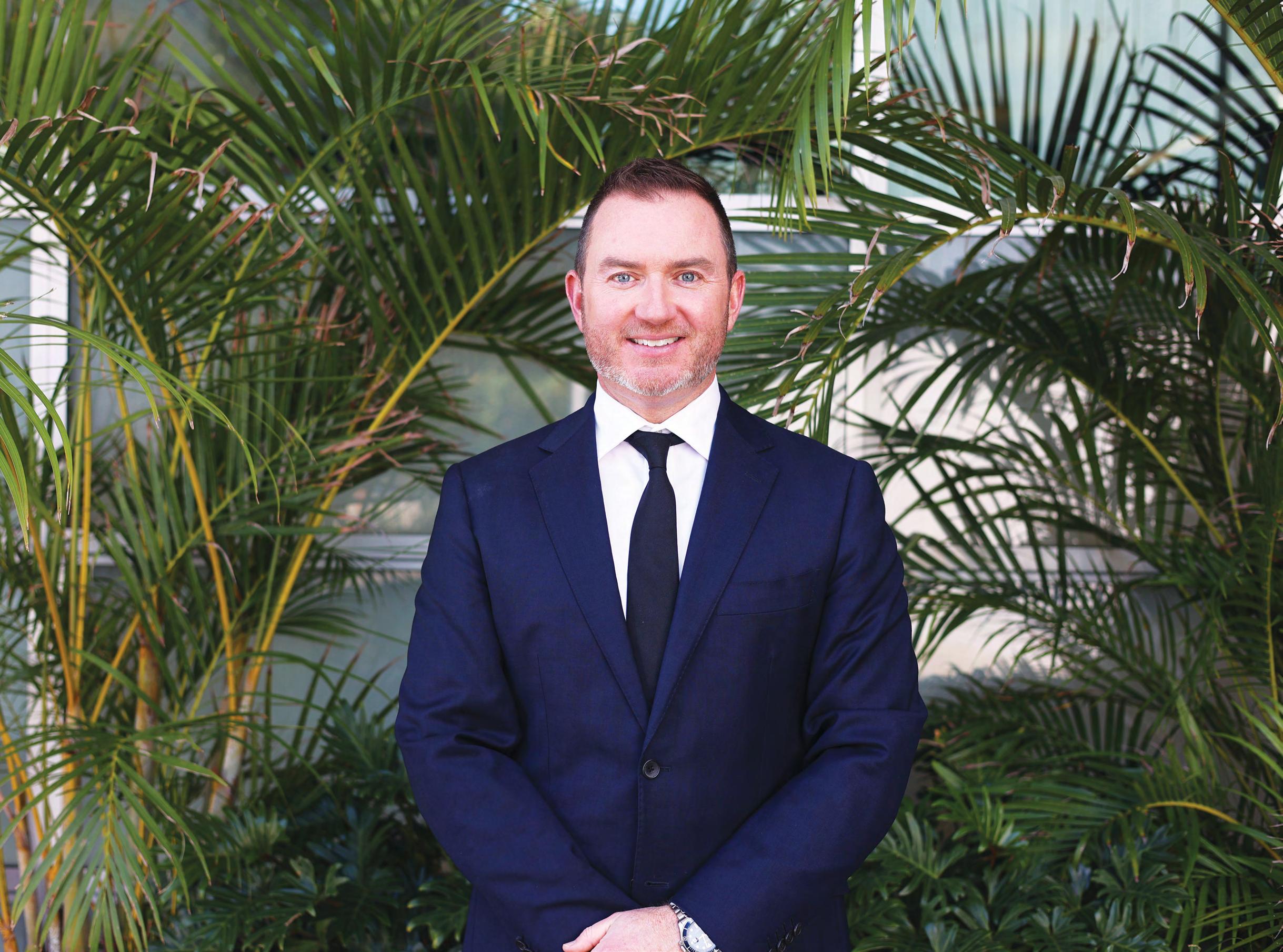
Peter Fox’s role as the Head of Music at Cranbrook Junior School is one of leadership, passion, and dedication. He is responsible for guiding and directing both the Music curriculum and performance programmes for students from Pre-School through to Year 6. Under his direction, the Music Department has become a dynamic environment where young students are encouraged to explore their musical talents and express themselves creatively.
Peter’s mission is to inspire students through their musical journey, whether they are engaging in performance, developing an appreciation for music, or discovering new and creative ways of thinking.
What does your role entail?
Leading and directing both the Music curriculum and performance programmes in the Junior School.
What brings you the most joy within this role?
Witnessing the growth, joy and love of Music in our students as we inspire them in their journey from Pre-School through to Year 6, whether it’s through performance, appreciation of music or creative ways of thinking.
What do you think is the most important aspect of music in education?
In a world where we ‘press a button’ and expect instant results, this creates great challenges for us all, particularly our students. Learning an instrument requires patience, persistence and precision of practice, and in this distracting and distracted world, where we are so used to instant gratification and results, this can prove to be tricky. When we truly immerse ourselves in music-making we learn how to become more mindful, disciplined and focused. It’s important to remember that making music is not one of life’s frills. It’s something that goes to the very heart of our humanity, our sense of community, and our souls. You express, when you sing, your soul in song. When you play an instrument in an ensemble, you sacrifice your ego to benefit the team. When you get together with a group of other singers or musicians, it becomes more than the sum of the parts. The ‘I and me’ transforms into ‘us and we’ and that’s when the magic happens, and this is the case in any endeavour! Working together in harmony is what this world needs!
What brought you to Cranbrook?
At the previous school I worked at, I would take these students to the IPSHA Performing Arts Festival at Town Hall, combining with other schools. Cranbrook was one of these schools participating and the Head of Cranbrook Junior School, at the time, became very interested in the performance work I was doing with my students. A few years later an opportunity arose, and I applied!
What do you enjoy most about your role?
So many things! Inspiring and assisting our students to do their best as they aim for excellence, to deal with nerves in performance and to appreciate the Arts. Seeing them continue their love and/or appreciation of music through high school and beyond is very rewarding! I love providing as many opportunities for our students as we can, from our Music Morning Concerts, Soirées, whole school Showcases, Eisteddfods, Carol Services through to giving back through service as they perform for communities outside the School.
We have a very dynamic and busy Music Department, and I enjoy being organised as much as possible so that the framework for learning opportunities is maximised.
What is your favourite memory of teaching at the Junior School?
There are many, many favourite memories, but a recent one was the Junior School’s Cranbrook Voices performing Luke Byrne’s Buruwan Elegy at this year’s Gala Concert at Town Hall. This select vocal group executed this piece with such poise, sensitivity and respectful regard for the moving Dharawal text. The descant in the final verse was beautifully haunting and moving, so much so that I had goosebumps whilst I conducted and accompanied them! I may have shed a tear too!
What advice / words of wisdom would you give to parents or students who are passionate about music?
A little bit often! Consistency of practice is the key – not how long you play for in one session. This improves our muscle memory and strengthens the neural pathways.
THE LITTLE THINGS IN LIFE
Being coastal!

FAVOURITE QUOTE
“We teach music because it acts in a unique way on the heart, mind, soul and spirit of the child, stimulating thought and imagination in very special ways. These are the real reasons for teaching music.”
Richard Gill
FAVOURITE RECIPE
There’s many, but if I need to cook something quick that’s still delicious, it would have to be Donna Hay’s ‘one pot Chinese chicken’ with its ginger infused flavour and coriander garnish.

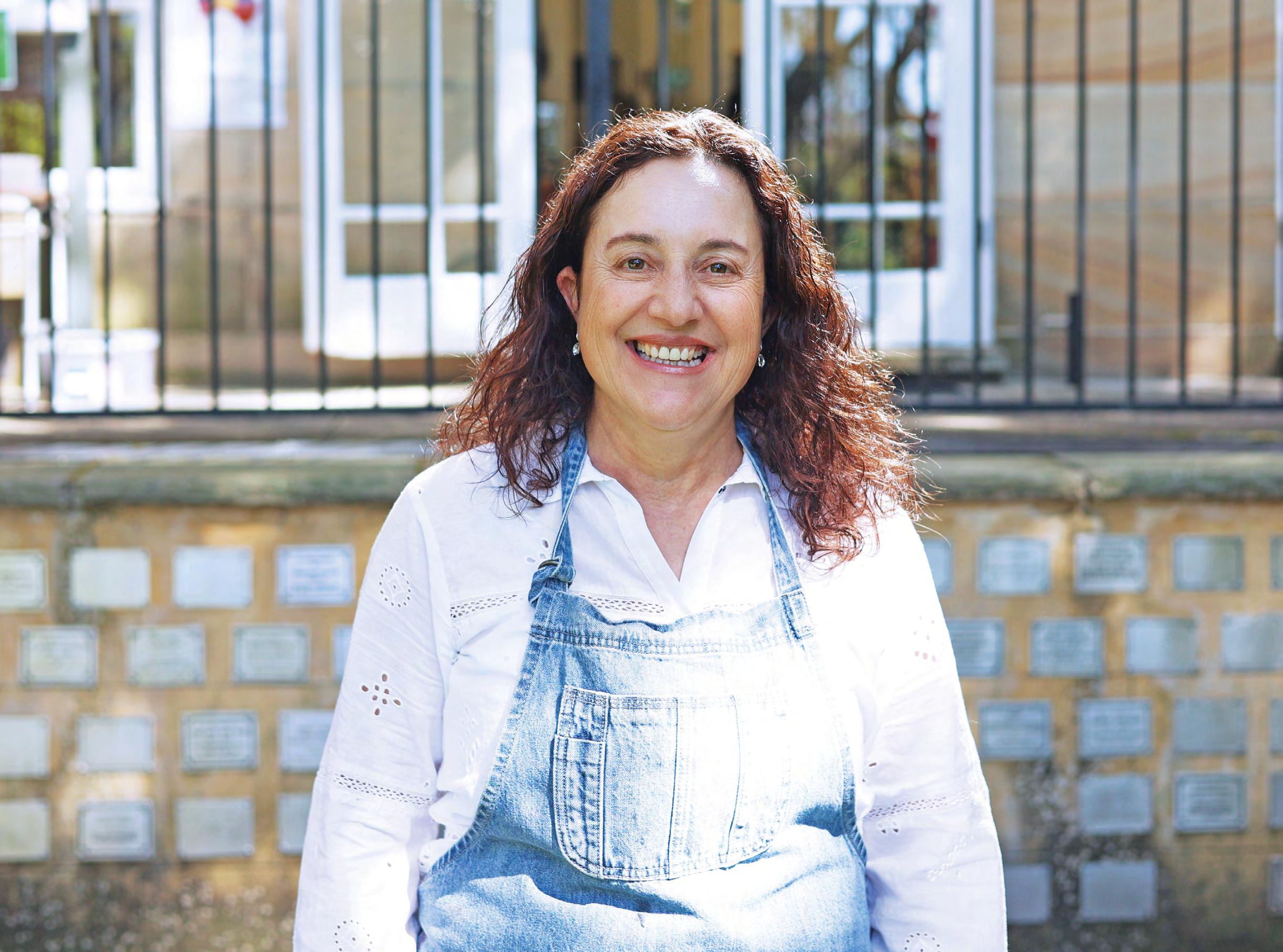
In the vibrant and formative environment of Cranbrook Pre-Schools, the role of a Visual Arts Teacher is both a privilege and a responsibility. Rosie Kmet is tasked with planning and delivering engaging activities that not only capture the imaginations of these young learners but also help them build essential skills. Rosie’s role is more than teaching art; it’s about creating a positive and supportive environment where each child’s artistic potential and curiosity can flourish.
What does your role entail?
I work with children aged 3 to 5 years, fostering their creativity and introducing them to the fundamentals of Art. My role involves planning and delivering engaging activities that align with our units of inquiry. These activities are tailored to the developmental stages of young children, encouraging them to explore different materials and techniques. I collaborate closely with the team to ensure a cohesive and enriching learning experiences. Through my guidance, the children learn to express themselves visually, build fine motor skills, and develop an appreciation for Art. I also play a key role in creating a positive and supportive environment that nurtures each child’s artistic potential and curiosity.
What brings you the most joy within this role?
My greatest joy comes from witnessing the boundless creativity and uninhibited imagination of young children. I am inspired by the pure excitement they bring to exploring colours, shapes, and textures. Seeing their eyes light up when they create something uniquely their own and knowing I have helped nurture that sense of accomplishment is incredibly fulfilling. The joy watching them develop confidence in their abilities, express their feelings through art, and discover the world in new ways brings a deep sense of purpose and happiness in my role.
What do you think is the most important aspect of Art in early education?
The most important aspect of Art in early education is its ability to foster holistic development in young children. Art serves as a powerful tool for self-expression, allowing children to communicate thoughts, emotions, and ideas that they may not yet have the words to articulate. Through creative visual art activities children develop fine motor skills, enhance cognitive abilities, and build problem-solving skills as they experiment with different materials and techniques. Art also promotes socialemotional growth, encouraging collaboration, patience, and empathy as children share and discuss their creations. Ultimately, Art in early education lays the foundation for a lifelong appreciation of creativity, critical thinking, and emotional resilience.
What brought you to Cranbrook?
I applied for the position at Cranbrook because of my passion and background in early childhood education in which Art is a fundamental component. The fact the School was advertising for a specialist Art Teacher in the Pre-Schools proved to me that my beliefs would be valued. Cranbrook’s investment in early childhood education was clearly evident and I believe that the early years are a crucial time for children to explore their creativity and develop a strong foundation in self-expression.
Art is a powerful medium that not only allows young children to communicate their thoughts and feelings but also supports their overall development-cognitively, emotionally, and socially. I’m inspired by the opportunity to nurture this growth in a supportive and stimulating environment, and Cranbrook’s commitment to excellence in education aligns perfectly with my own values and aspirations as an early childhood and Art Teacher.
What do you enjoy about your role?
I enjoy working as a Visual Art Teacher with preschoolers because it allows me to be part of their most formative years, where their creativity and imagination are just beginning to flourish. I find great joy in creating an environment where children can freely express themselves, explore new ideas, and develop a love for art that will stay with them throughout their lives. Watching their eyes light up as they discover new colours, textures, techniques and their creations is incredibly rewarding. Being able to nurture their confidence and guide their artistic journey makes my days with them, a fulfilling and inspiring experience.
How has the Pre-School had an impact on your role?
The simple fact that Art is a specialist lesson in the Pre-Schools at Cranbrook, highlights the strong emphasis the School place on the importance of Art in early childhood education. Joining the Pre-Schools has been an incredibly enriching and empowering experience for me, due to the nurturing environment and the School’s dedication to fostering creativity. The days I attend the Pre-Schools I am inspired by the curiosity and enthusiasm of the children, which is a direct reflection of the positive and supportive culture cultivated by the present staff. I am grateful for the wonderful support and encouragement I have received from everyone at the Pre-Schools, in particular the professional leadership of Abigail McFarlane who has made my position as Early Childhood and Art Teacher very welcoming.
What advice / words of wisdom would you give to parents considering starting their children at Cranbrook Pre-School?
At Cranbrook Pre-Schools, children are nurtured in an environment that celebrates creativity, curiosity, and individual growth. They have invested significant resources in their Pre-School, at a level which is the highest in my 35 years of teaching. Here, your child will not only learn but thrive, developing a love for learning that will stay with them for years to come. The supportive community and dedicated staff ensure that each student feels valued and empowered to explore their unique talents. Cranbrook is more than a school-it’s a place where your child’s imagination and potential will blossom.
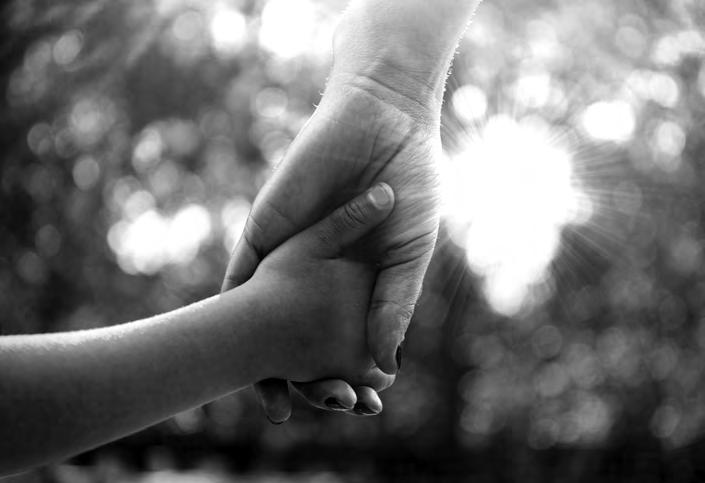
My happy place is simply being with my family, no matter where we are.
FAVOURITE QUOTE
My favourite quote is one I have used throughout my own children’s lives, and I still refer to it, in their adults’ lives:
“A positive mind makes the impossible, possible!”

FAVOURITE RECIPE
Eggplant Parmigiana is my favourite recipe because it brings together rich, comforting flavours in a colourful dish that’s both traditionally part of my family Italian culture and satisfying. The layers of tender eggplant, tangy tomato sauce, and melted cheese create a perfect balance that I can never resist. It’s a recipe that feels like home every time I make it.

As President of the Old Cranbrookians’ Association (OCA), I’m proud of the partnerships we’ve cultivated across the Cranbrook community. Our mission is to build lifelong connections between Old Cranbrookians, students, and the School, establishing a legacy of mentorship and shared values that reach far beyond the classroom.
OUR WORK WITH THE School’s Investment Club exemplifies this commitment. By linking experienced OCs with current students, we offer practical financial insights and strategic thinking that prepare students for life beyond Cranbrook. This partnership empowers students to develop financial literacy and decision-making skills – essential tools for their future.
In Term 4 students and OCs gathered to hear from Adam Jacobs (OC 2000), founder of The Iconic and Hatch. Earlier this year we were fortunate to meet and hear from Niki Scevak, Blackbird Ventures and Tim Doyle (OC 2007), Eucalyptus.
Our collaboration with the Cranbrook School Parents’ Association (CSPA)
strengthens the Cranbrook network, uniting parents, alumni, and students. Through initiatives with the CSPA, we support students academically and personally, fostering connections that enhance the Cranbrook experience. This year’s Year 11 & 12 Networking Evening is a testament to this partnership. The OCA’s engagement with the Cranbrook staff further extends Cranbrook’s spirit. Events like the OCA Sports Day brings the sports staff, OCs and students together in friendly competition, promoting teamwork and resilience while celebrating Cranbrook’s sporting legacy. At our annual OCA Lunch, we celebrated the 30 and 25 years of service of Scott Davis and Rob Messiter respectively, inducting them as honourable Old Cranbrookians.
In the following pages, we celebrate the achievements of our OCs, including filmmaker Kane Senes (OC 2004), journalist Adam Shand (OC 1980), and novelist/producer Josh Brandon (OC 2001).
Through these collaborations, the OCA ensures Cranbrook remains a lifelong family for all who pass through its gates, embodying the Esse Quam Videri spirit.
Marty Cayzer (OC 1988)
OCA President

Adam Shand (OC 1980) is a renowned crime journalist, who has won a Walkley Award for exposing police corruption, written six books and in 2025 will feature in his TV series The Hunters on the Seven Network, where he investigates and exposes high-profile crimes. Across his career spanning more than three decades, Adam’s rubbed shoulders with some of Australia’s most notorious criminals – and even been threatened by them – all in the quest to uncover the story.
NOW 62, ADAM ATTENDED Cranbrook School from 1971-80 a period of upheaval in Australian society, when old traditions and values were changing rapidly. Adam remembers Reverend Barry Thiering and other mentors as notable figures from his memory.
“We were very cosseted little kids,” Adam says, “but Barry had a view of the future that was inclusive, pushing back against noninclusive behaviour. He introduced us to new faiths and ways of thinking and understanding.”
Reverend Thiering wasn’t the only Cranbrook teacher preaching the new gospel. Another inspiration Adam remembers was the music teacher and composer Sykes Rose, who played experimental rock music in class - and danced to it on his desk. “It blew our minds,” Adam recalls. “Bands like Yes, Pink Floyd, Emerson, Lake and Palmer. Some people didn’t appreciate him, but I look back at it now and think, ‘Wow, that’s exactly what we should have been doing’.”
It was amid this backdrop of liberal thought and progressive ideals that Adam found his calling as a writer and storyteller. He says that

From a liberal education to a life of storytelling
Cranbrook helped him identify what he was good at and helped him develop that talent. “I remember a writing assignment in fourth grade when Des McGuire was my teacher, and I wrote about being on a mountainside in a snowstorm with a broken leg, contemplating life, and he said to me: “You’re going to be a writer.”
“Cranbrook wasn’t a doctrinaire sort of school, it was a school where you were invited to explore your possibilities. It gave you a sense of your own future and the country’s future.”
Even though he came from a Rose Bay family where law was the trade, becoming a journalist was always Adam’s goal. His first forays into reporting were in finance in the days of hot metal and excessive alcohol. “The editor would say to you once a month, I want you to put down your pens and go out for lunch, tip over and not come back. They were fun times.”
But he yearned to explore the world. A spell in Africa in the mid-’90s reporting on the tragic decline of Zimbabwe and the emergence of South Africa from apartheid only whetted his appetite for excitement and adventure.
When Adam returned to Australia, there was a gangland war raging in Melbourne. Adam saw an opportunity to cover the story that wasn’t being told by the police. He wanted to tell the villains’ story. Daring to go where others feared to tread, he made that space his own - and has done ever since, masterfully extracting the truth, however grim, from society’s underbelly.
At one point he embedded himself with Australia’s outlaw biker clubs. “Occasionally, people would ring me late at night who wanted to shoot me and blow my house up and stuff like that,” he says. “Everyone says it’s a dangerous profession to be in, but you can go along avoiding risk all your life, and worrying and being anxious but still get hit by the falling piano. Avoid the falling piano, because it’s got your name on it!”
Adam says crime journalism is so much more than evil characters and evil deeds. “You learn a lot about society. You come to understand the linkages between for instance, young people taking drugs and organised crime, and how many lives are lost in the making of those drugs.” It almost comes as a surprise then to discover that the highlight of his 40-year career was not winning a Walkley for uncovering the layers of corruption in the Victorian police force, but interviewing the great Nelson Mandela as he claimed power in the new South Africa. It was a magical moment, immediately after Mandela’s inauguration in April 1994, a moment that only came about because Adam encouraged his TV crew to breach the security and intercept the country’s new President as he made his way to the ceremony.
It is these magic moments, predicated on a seize-the-moment mentality, that have inspired and continue to sustain Adam in his work. He believes journalism is still a fantastic profession with infinite opportunities. “The wonderful thing about it at a basic level is you have that great asset of the random possibility,” he says. “It’s a type of magic. For example, if you’re writing, you start with a blank sheet of paper and it becomes a story or a book. What else allows you that?”
Adam’s career has ranged across print, radio and television, and now he has his own successful podcast Adam Shand at Large. Unlike some critics who see the media becoming more concentrated in the hands of the few, he says new technology has made journalism more democratic than ever, giving budding reporters the chance to bypass the big companies and find their own audience.
“Through podcasts, or TikTok or social media, a journalist can reach the people they want. Previously, Australian media was

Adam Shand At Large is a deep dive into the world of a working true crime journalist. Shand will introduce listeners to an eclectic cast of characters seeking justice or simply an opportunity to tell their stories. These are long term investigations that Adam has followed or the true story behind the biggest crime news of the day.
protected. We all had to go take Mr Murdoch or Mr Packer’s shilling to get a gig. It meant a lot of people didn’t have a voice. So I’m very positive about the future of journalism.”
He also feels positive about the future of Cranbrook, and especially the School’s decision to transition to coeducation in 2026. “The responsibility of the School is to recognise the future and prepare students for it, rather than resisting change,” he says.
“Going coed was something that was even being talked about when I was there, because most of us didn’t know how to talk to a girl.”
These days, Adam divides his time between Zimbabwe, where the mother of his two children is a diplomat, and Melbourne. But he still finds time to catch up with old school mates and enjoy their shared history.
“There’s a bond. I think whether we understood it or not, the idea of being true to yourself was quite pervasive at Cranbrook,” he says. “A lot of us can struggle with that in life, accepting who we are. I think it came back to the old motto: Esse Quam Videri - to be rather than to seem to be. I think that’s a good thing.”

IN THE TWO DECADES since Kane Senes (OC 2004) graduated from Cranbrook, he has become arguably one of Australia’s most-watched up-and-coming film directors. “It’s like playing in a sandbox with all your friends and all your toys,” says Kane of the experience of directing movies. “It’s that same feeling I had back at Cranbrook being part of a theatre production. I just love it.”
His three feature films, Sissy (2022), For Now (2019) and Echoes of War (2015), have won several international awards and garnered widespread critical acclaim. Underpinning his career growth has been the liberal education he received at Cranbrook, an education Kane describes as unlike other schools. “It gave you space to find yourself,” he says. “It’s where I got the bug, where I got turned on to acting and directing.”
Hailing from the Eastern Suburbs, Kane was a second generation Cranbrookian – his father George (OC 1963) and older brother Ben (OC 1993) attended the School – but whereas the business world was their natural habitat, Kane was more interested in treading the boards than being on one. In some ways, he was the black sheep of the family, but he credits Cranbrook with giving him the confidence and encouragement he needed to be who he was rather than what others might have wanted him to be.
“When I think about the School motto, ‘to be rather than to seem to be’, it’s really been important for me because it serves as a reminder that I am at my core a storyteller, an artist, and a filmmaker, even when it might not have seemed like that to other people,” says Kane.
Nancy Winter, the Head of Visual Arts and Drama Head Robert Wickham, were two teachers Kane says were central to his artistic development. Winter nurtured his talent; Wickham compelled him to express it. A turning point came in Year 12. Kane was happy to snub Hamlet, the School play, and focus solely on his HSC studies, but Wickham had other ideas. He could see Kane possessed a gift; the prospect of receiving School Colours was the carrot.
“He expertly manipulated me into doing it and I’m glad he did!” Kane laughs. “Doing that play awoke something in me. If Mr Wickham was pulling me into his office saying you should audition, there must have been something I wasn’t seeing. I wasn’t seeing the path that was for me.”
Playing the dual role of Hamlet’s father’s ghost and the Player King, he was among a stellar cast that included Kip Williams, the recent Artistic Director of the Sydney Theatre Company, as Claudius, and Sam Reid, star of award-winning ABC series The Newsreader, as Hamlet. “That year in drama was great fun and the interactions we had with each other and actors from other schools were fantastic,” he says.
One of his fondest Cranbrook memories was performing Atticus Finch’s famous courtroom monologue in To Kill a Mockingbird for the HSC under the guidance of Drama Teacher Belinda Rupp. It still blows his mind that a 17-year-old could attempt to pull off the role of a middleaged lawyer defending a civil rights case.
“Ms Rupp really helped me a lot; she was a wonderful influence,” he says. “It’s funny, playing adults at that age you don’t really know what you are doing, but you have to try to find some kind of truth in it that you can relate to. That’s what acting is: being able to disappear into parts that are very different to you by finding something in yourself to hold on to.”
Kane’s path to directing was a circuitous one. He studied Arts/Media Communications at University of NSW but soon realised movies were his driving passion and signed up for the New York Film Academy in Los Angeles so that he could experience the “Mecca of filmmaking”.
Living in the City of Angels was both an inspiration and an eye-opener, but even armed with a Master’s Degree, there was no certainty Kane would build a career behind the camera.
“It’s not like you can become an apprentice film director, in the same way you can become a junior in a law firm,” Kane says. “There’s no proven pathway.”
Networking was key; so was learning that he could never be too obsessive about his craft, something he discovered working as a production assistant on The Great Gatsby Director Baz Luhrmann took intensity to a new level. One of Kane’s jobs was painting the inside of Luhrmann’s office in dryerase paint, then writing summaries of all the film’s scenes in black Texta all over the walls so the master auteur could view them from anywhere in the house. It was an all-eyes, all-ears, 24/7 approach that Kane found inspiring, if a little unnerving.
“I think there really is an element where you need to be obsessive in order to get a movie made when you’re the director. You’re the team leader and every department has questions for you: How should something look? What kind of costumes? Camera shots? Lighting? And then there’s the actors’ questions, so you’re being bombarded constantly. But I love being on
set and being able to keep the vision of what the final film should look like in my head.”
However, he tries not to let the daily chaos of movie making spill into his domestic life.
“It was almost a bit mad,” he says of Luhrmann’s approach. “I think your life outside making a film needs to be pretty ordered and ordinary so that the work can be insane and epic. The making of a film is chaos enough. You need balance.” Part of that balance involves his wife and business partner Hannah Barlow, whom he met editing his first film, Echoes of War, a psychological Western. A fellow moviemaker, Hannah and Kane co-wrote and directed the award-winning Sissy, which focuses on a young lifestyle influencer whose life spirals into bloody revenge on a hen’s weekend with old school friends. It’s a “black comedy, coming-of-age thriller that turns into horror” showcasing Kane’s fascination with bending genres. Kane says horror is his favourite genre because it brings a heightened reality to the screen and allows directors the most room to comment on society.
“Horror filmmakers are addressing their fears, whether it’s the fear of technological change with AI or climate change or whatever ... And horror gives you a splashy, over-the-top way of saying things. There are so many ways of doing it,” he says.
Kane believes the essence of quality narrative is in telling the story. “We are all storytellers, even if you’re just telling a mate about how you ran into so-and-so the other day. You tell it in a way that holds back the juicy bits of information until you can see that your friend is really listening. In a movie, it’s a matter of building intrigue, and then having enough twists and turns in a story to keep people engaged. It’s about creating interesting characters who are deeply flawed like we all are.”
Kane and Hannah are already writing their next movie, Cooch, which is described as a “sci-fi horror genre mash” that will be launched through their Australian production company Dog Park next year. At 38, Kane is at the top of his game. He is in an industry he loves – “I would watch 10 movies a day if I could!” – and is building an international reputation for producing highly original work. In 2022, after premiering at the prestigious South by Southwest (SXSW) film festival in Austin, Texas and winning multiple awards on the international festival circuit, Sissy was nominated for an Australian Academy of Cinema and Television Arts (AACTA) award for best direction alongside industry heavyweights Luhrmann, George Miller and Leah Purcell.
Even after living in the bright lights of LA, Kane hasn’t forgotten his roots or his alma mater: “One of the great things about Cranbrook is that you create a lot of enduring friendships, and I keep in touch with my group of mates fairly regularly. I’m also grateful that Cranbrook had a focus on the Arts that many other schools didn’t have, because I wouldn’t be where I am now without it.”
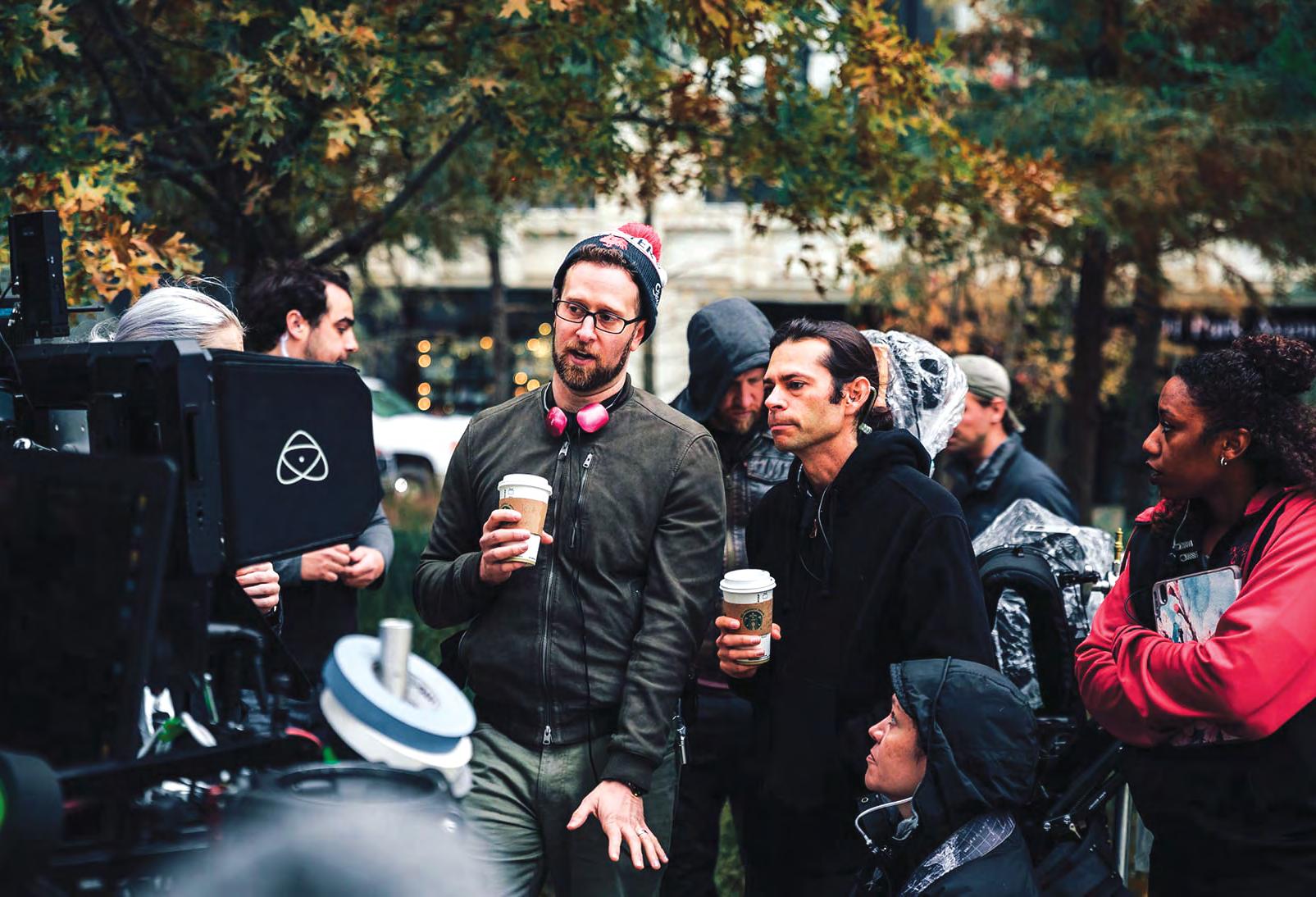

JOSHUA BRANDON (OC 2001) lives with his wife and three dogs in Lake Toluca, a suburb of Los Angeles steeped in Hollywood tradition and glamour. Bob Hope, Bing Crosby and Frank Sinatra all lived there. Josh occasionally bumps into Steve Carrell at the local grocer, and lives around the corner from Melissa McCarthy and Macaulay Culkin.
A self-made director, screenwriter, author and producer, Josh’s production company Spitfire is kicking goals in one of the toughest industries in the world. “You get to LA and start at the absolute bottom rung,” Josh says. “No-one cares about what you’ve done in the theatre in Australia. They ask: what have you done here in LA? Nothing.”
Josh’s personal ethos has always been a nothing-to-lose approach: he does, rather than waits to be invited. In Year 12 Josh approached Head of Drama, Robert Wickham, with the idea of putting on the famous courtroom drama 12 Angry Men. It was an exacting task for the fledgling director. He had to corral his peers, get them to rehearse in the holidays and deal with the anxiety of young actors forgetting their lines – a tremendous exercise in the art of people management.
“What I learnt in that play carried me through to directing at University and
moving to the States, and now I produce films, run companies and have a lot of people working for me, and I think being able to manage different personalities started with 12 Angry Men,” he says.
The power of storytelling gripped Josh from an early age. At Cranbrook, he collected movie scripts and studied the techniques writers used to convey emotion from viewers. He wrote his first screenplay at 15 and is still impressed that his Headmaster Dr Bruce Carter regularly took time to watch and review the videos of him and his friends making movies. Joshua has now written and directed several movies, including A Thousand Little Cuts for Showtime and the dark thriller Black Bags
“People don’t talk in real life like they do in the movies but you have to straddle that line between sounding too ridiculous and heightening the sense of reality so it can be entertaining,” he says. “That’s the trickiest thing, and a lot of people struggle with it.”
After he graduated from Cranbrook, Josh ran a theatre company with his cousin Steven while studying Media and Communications at UNSW, before leaving Sydney to chase his Hollywood dream. Through sheer persistence and the kind of luck that comes only from hard work, he landed a number of Production Assistant roles and by the age of 28 was a staff writer on a CBS sitcom Friend Me. By 31, Josh achieved his first produced episode of television for the sci-fi series Haven on NBC Cable channel Syfy. But it wasn’t a seamless progression. In the movie and TV world, shows

are regularly canned, pilots crash before take-off and a veneer of superficiality haunts every human transaction. It’s the very antithesis of the Cranbrook motto Esse Quam Videri – to be rather than to seem to be.

Josh sold a TV pilot script in 2010 to ABC Family, only for management to change and the new boss deciding to scrap all shows developed under his predecessor. The CBS sitcom he worked on in 2012 never made it to television, despite having filmed eight episodes. When he first arrived in LA, Josh remembers meeting an actress from the famous professional improv. theatre troupe The Groundlings, who invited him to see the show. When he went to say hello to her afterwards, he was shocked to find that she wasn’t expecting him to turn up at all.
“Apparently that’s the way it works in Hollywood. You just tell people what they want to hear. So yeah, that Cranbrook motto means a lot to me, because it’s a really good way to live your life in a place like this,” Josh says. Indeed, authenticity is what underpins many of Josh’s career moves. In 2022, A Thousand Little Cuts was picked up by Showtime. A psychological thriller with a theme of domestic violence, it is a rare instance where a male Writer and Director has been able to tackle this difficult subject with nuance and empathy. “I was really proud of it,” Josh says. “It’s like how women will go see a male pop star, but

men won’t go see a female pop star, so I thought if I could make the movie in a way that would get men to go and see it then that’s a way into the conversation for them.”
One of the perks of working in Josh’s industry is getting to meet your heroes. Josh has been a Star Trek fan since he was very young. He had met William Shatner, who starred as James T. Kirk in the writer’s room of the supernatural TV drama series Haven. A few years later, Josh came up with the idea of co-writing an autobiography with Shatner. In Joshua’s trademark, nothing-to-lose style he pitched it to Shatner. “He has that very deep voice and he said: ‘It would be arrogant for me to write a book like that; I only know what’s worked in my life for me’. He proceeded to tell Josh that “perfect moments, like, for example, biting on a ripe apple fresh from the tree,” were what he craved and what gave his life purpose.
“I said to him, ‘Bill, that’s the book! That’s what it’s about’.”
Boldly Go: Reflections on a Life of Awe and Wonder, was published
in October last year, and has since gone on to receive rave reviews, and a recent updated paperback release. It was cowritten by Joshua Brandon and Shatner.
With a new movie under his belt – a family comedy called 25 Miles to Normal, starring Oscar-nominee Bruce Davison, ET’s Dee Wallace, and Ed Begley Jr., the successful publication of a book, and his professional reputation continuing to soar, Josh is excited about the future: “In 10 years’ time I’d like to have worked on another TV series, preferably one I’ve created myself,” he says. “But only a few people get to do that, so if that doesn’t happen it’s not the end of the world.”
Josh remembers when he got his first job as a Production Assistant at Warner Brothers saying; “I was driving around in a golf cart with another production assistant and I said to him, ‘This is crazy, look at this place, there’s so much history. Even though we were the lowest on the totem pole, we were there. It was surreal. And I never fail to appreciate how lucky I am.”
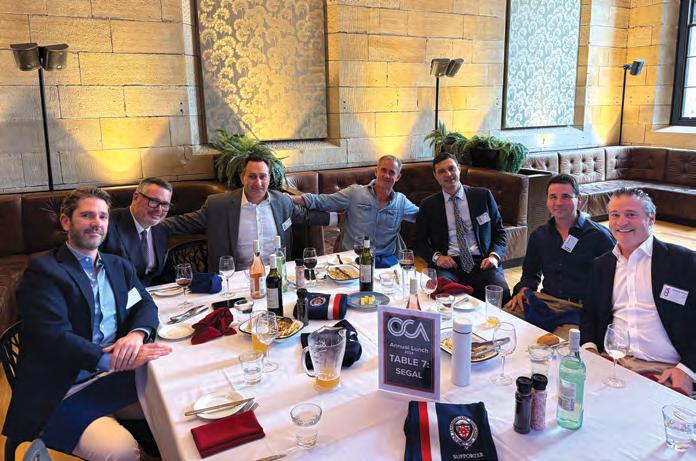
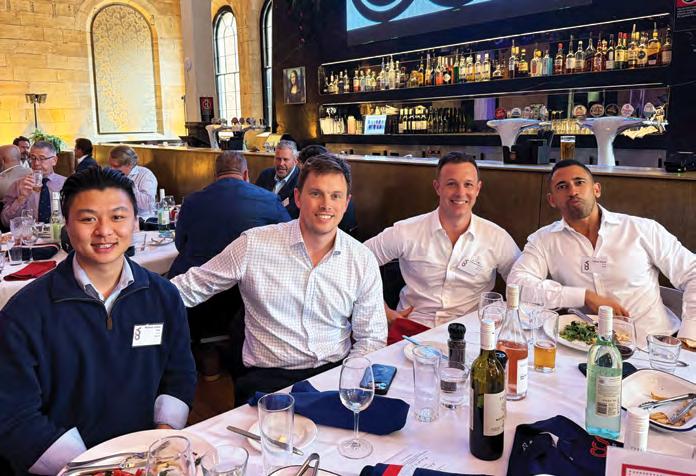
At the annual OCA Lunch held at The Rawson in The Rocks, Martijn Wilder AM (OC 1985) and Leo Coates (OC 2002) were honoured as the 2024 Old Cranbrookians of the Year. James Stevenson (OC 1992), owner of The Rawson, hosted over 100 OCs, spanning classes from 1982 to 2023, for an unforgettable long lunch.

This year, we hosted intimate gatherings that brought our interstate Old Cranbrookians (OCs) together, including a Melbourne cheese and wine tasting evening for 12 guests, hosted by Jeremy Spradbery (OC 1992), and a Brisbane dinner for 30+ OCs and their partners, organised by the OCA. Both events were well-attended, showing the enduring bond within the Cranbrook community.

In 2024, we welcomed the Classes of 1974, 1979, 1984, 1989, 1994, 1999, 2004, 2009, 2014, and 2019 back to Cranbrook, with close to 400 OCs touring the School. Additionally, the Classes of 1963, 1964, and 1965 enjoyed a lunch at Easts Rugby Club to celebrate their 60-year milestone. Many Old Cranbrookians travelled from interstate and overseas to attend, underscoring the strength of the Cranbrook connection.
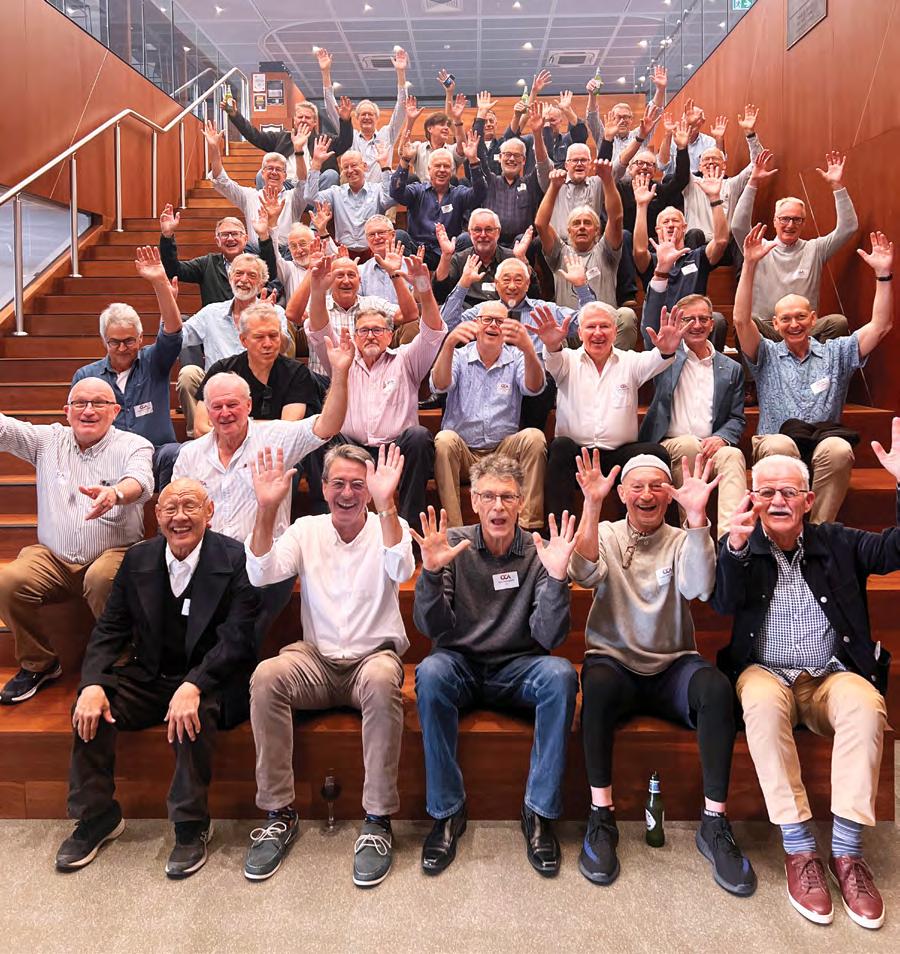
STRYDE4 DAY
Finally, the STRYDE4 event showcased the spirit of Esse Quam Videri. This impactful community day saw students, staff, parents, and volunteers walking 21km from Bondi Beach to La Perouse to support 13 charities. Spearheaded by Tour de Cure founder Geoff Coombes OAM (OC 1991), STRYDE4 empowered collaboration across six critical not-forprofit sectors: Mental Health, Cancer, Indigenous Support, Disability, Families, and the Environment. Each Cranbrook House partnered with a dedicated charity, making a meaningful impact in each area.
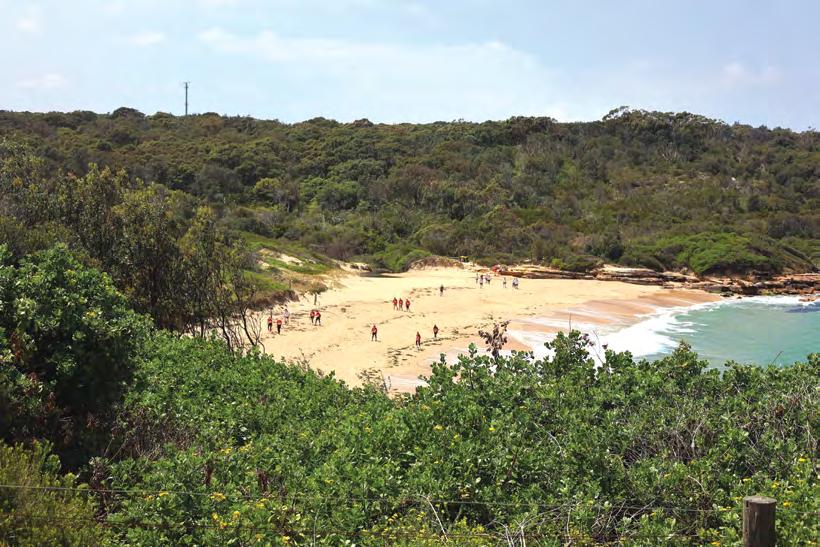



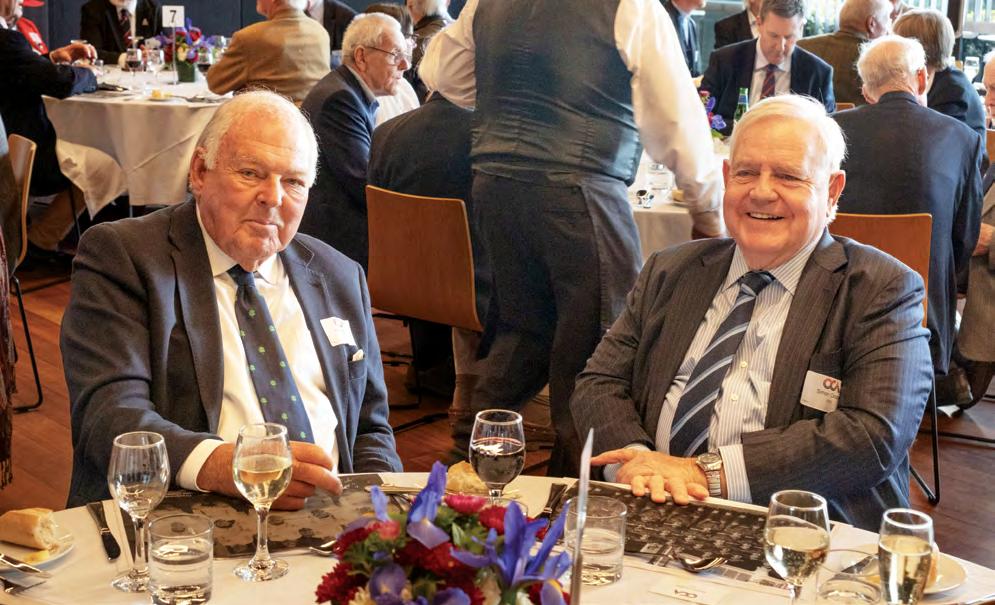
Our annual Vintage Club day, celebrating those who graduated 50 or more years ago, continued to grow in popularity. The day provided a wonderful opportunity for OCs to reconnect and share memories.
In September, the OCA Sports Day saw OCs competing against current students in sports including Basketball, Chess, Futsal, Sailing, Tennis, Touch Football, and Water Polo, with the School emerging as the overall winner.
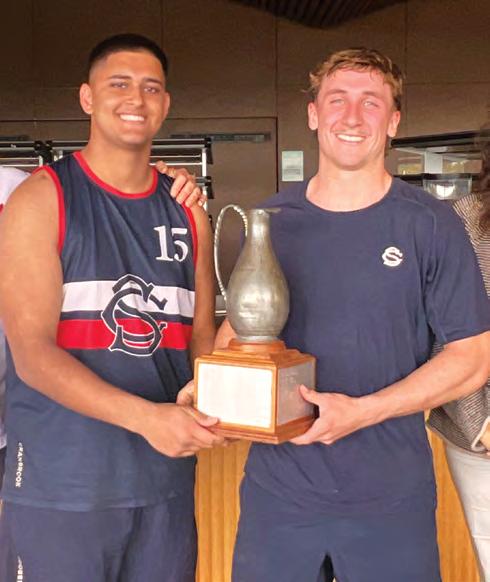

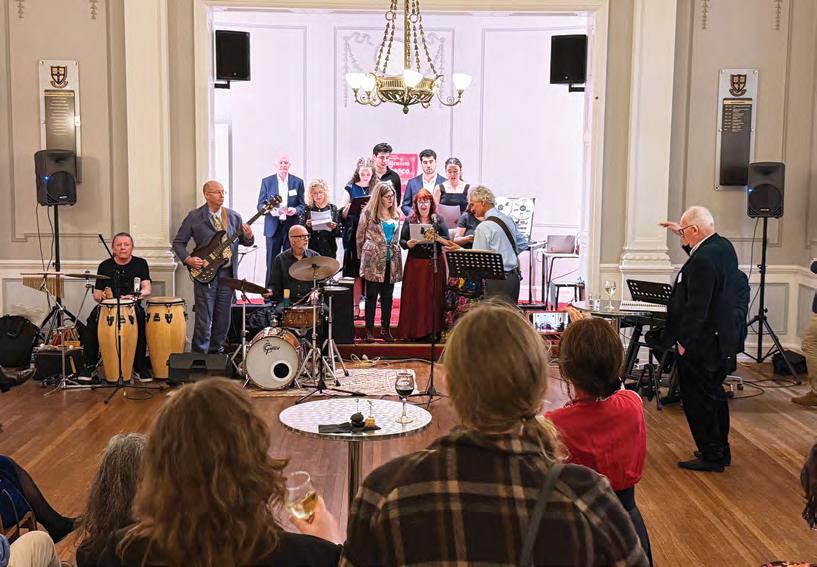
In October, we welcomed back members of the original 1974 Millennium of the Masses ensemble from Ascham School and Cranbrook. Under the direction of former music teacher Adrian Keenan (OC 1970), they performed the Sanctus from John Huie’s Eclectic Mass, with a special appearance by renowned flautist Jane Rutter. It was a remarkable evening of musical nostalgia.
If I had to summarise in two words what the CSPA is all about it is human connection. We are committed to helping our Cranbrook families develop and foster friendships that will last a lifetime.
2024 HAS CERTAINLY been a year that has brought us closer together. We truly hope each and every Cranbrook family feels a part of our warm, caring and welcoming community.
The CSPA Volunteers are our champions. Working quietly behind the scenes, they have organised more than 60 events, selling over 7,500 tickets. They book venues, set up Humanitix links, fold second-hand uniforms, sort textbooks, sell merchandise, cook sausages, serve cupcakes, answer questions and of course the most challenging role… manage the WhatsApp groups! Thank you so much for your generosity of spirit and good humour.
A special mention to our incredible Year 12 Parent Representatives Claudia Johnson, Allison Malcolm, Margot Toll and Samantha White. You have made our final year so special, and I know our fellow Year 12 families are extremely grateful for the wonderful events you have organised.
New to the calendar this year were the Senior School Mothers & Carers Day and Fathers & Carers Day Breakfasts. We look forward to continuing with these special events in the future.
Often our favourite events are those involving the students. Both the Year 10 Social and Year 12 Formal are such special rites of passage and we are continually impressed by the outstanding behaviour of our Cranbrookians. We are also pleased to continue funding the Tomorrow Man Programme and the Prue Salter Study Skills Workshops as well as the Roughtober Sleep Out and motivation speaker Alex Noble, all for the benefit of the students.
Our Second-Hand Uniform Shop is going from strength to strength. We are now opening every Friday to ensure we provide the best service possible to our families. Sales have tripled this year with revenues exceeding $50,000, all of which has been donated to CETOP, Thread Together, CanAssist and the Cranbrook Scholarship Fund.
Our Second-Hand Book Sale is also another new initiative that continues to gain momentum. We are thrilled to be working in conjunction with the CETOP
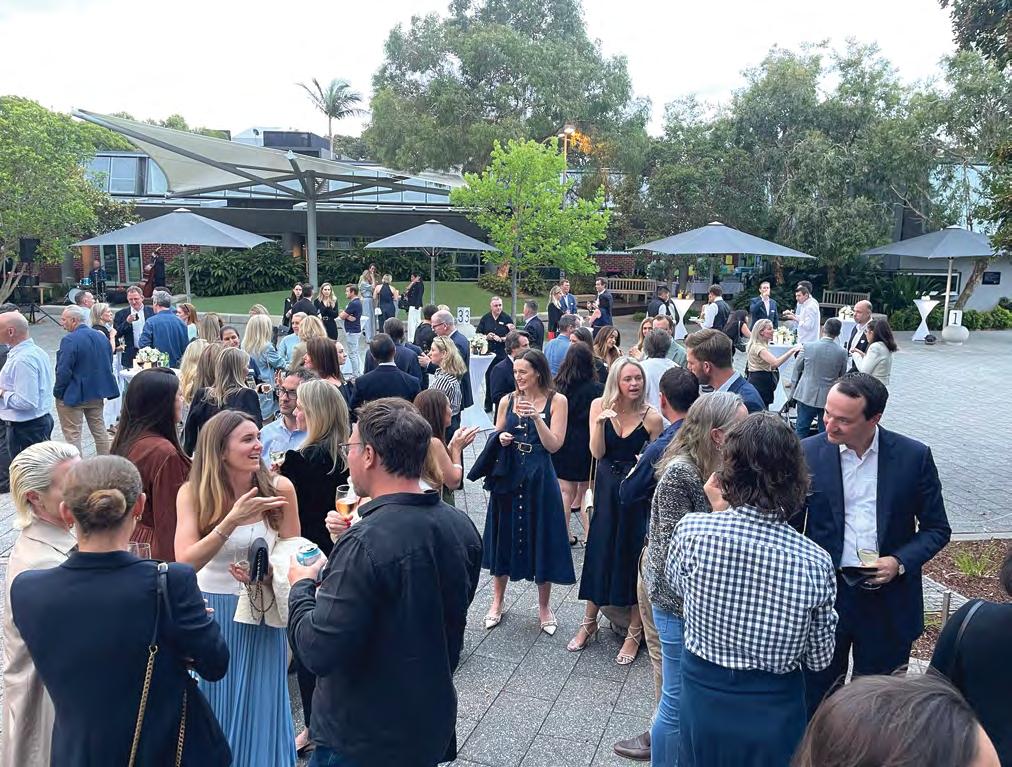
Committee to further develop our Reuse & Recycle commitment within Cranbrook.
We continue to work closely with the School to develop meaningful ways we can support and show appreciation to the dedicated Cranbrook staff through our new Staff Wellbeing Programme. In fact, one of the benefits of being involved in the CSPA is getting to know so many of the incredible people that work at Cranbrook. We are so fortunate to be supported by such a dedicated group including the friendly Reception staff, the wonderful Marketing Department, the “nothing is ever too much trouble” Facilities Department, the lovely Uniform Shop staff and of course our dedicated teachers and support staff. We are also grateful for the unwavering support we have from our Acting Head of School Michele Marquet and Deputy Headmaster Bob Meakin. Special mention also to Stephanie Honey who is our “go to” person for everything!
I would also like to take this opportunity to thank the outgoing CSPA Senior School Vice President Meg Tudehope and CSPA Secretary Natalie Samuelson. They truly embody our Esse Quam Videri motto. It has been joy to work so closely with both of these kind women and I know they will continue their contribution to Cranbrook in other ways.
It is with mixed emotions that I also step down from my role as CSPA President. With the tremendous support of my Committee, it has been an absolute privilege and honour to have led the CSPA for the past two years. I am looking forward to my new role on the Cranbrook Foundation and staying involved in the Cranbrook community.
I am very proud and excited to hand over to the very talented Angelique Haritos as the incoming President, Rebecca Cowan as Vice President Junior School, Adriana Litver as Vice President Senior School and Elizabeth Mangan as Secretary. Wishing you all a wonderful Christmas and restful summer break.
Sam Roberts CSPA President

